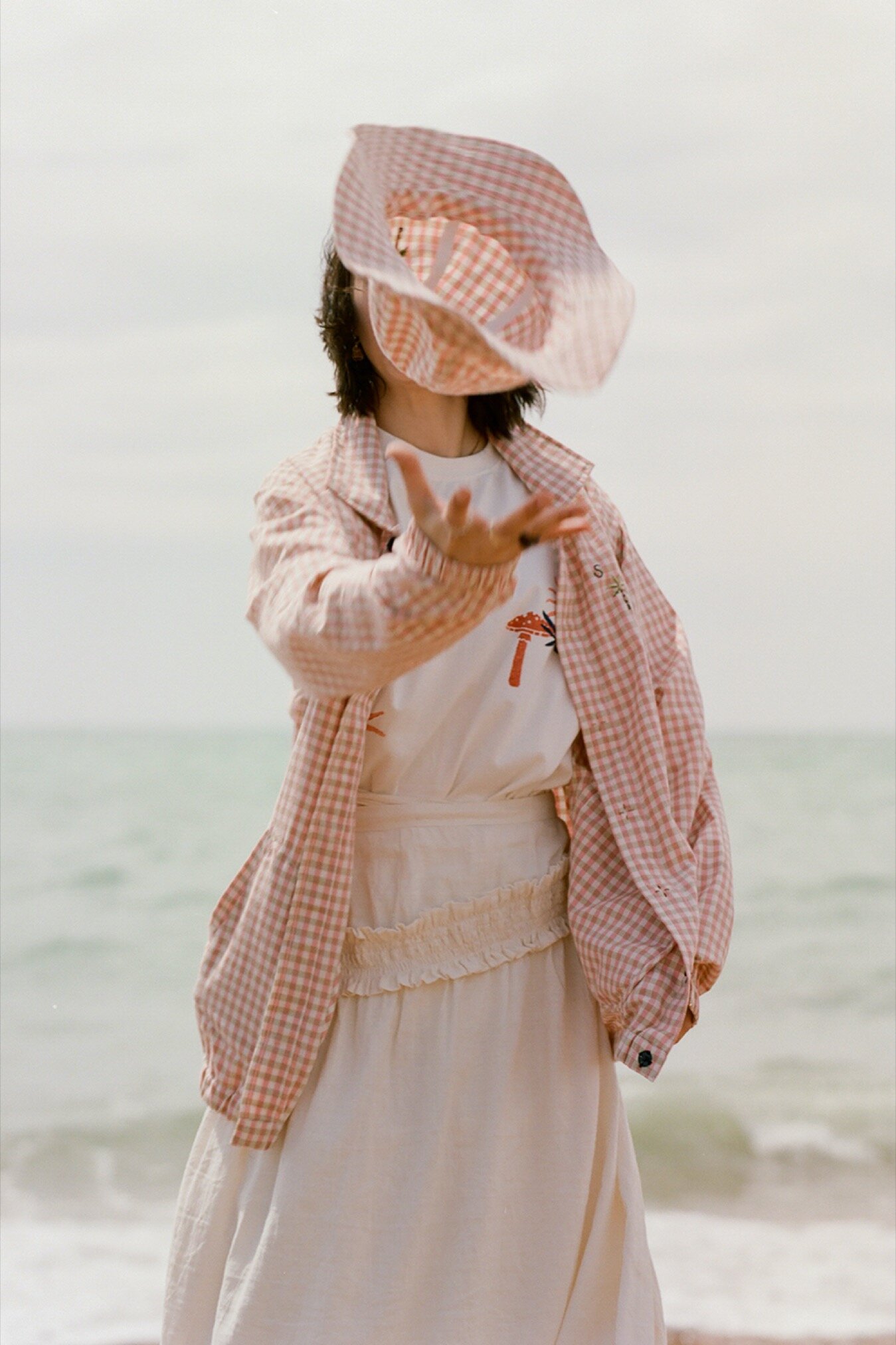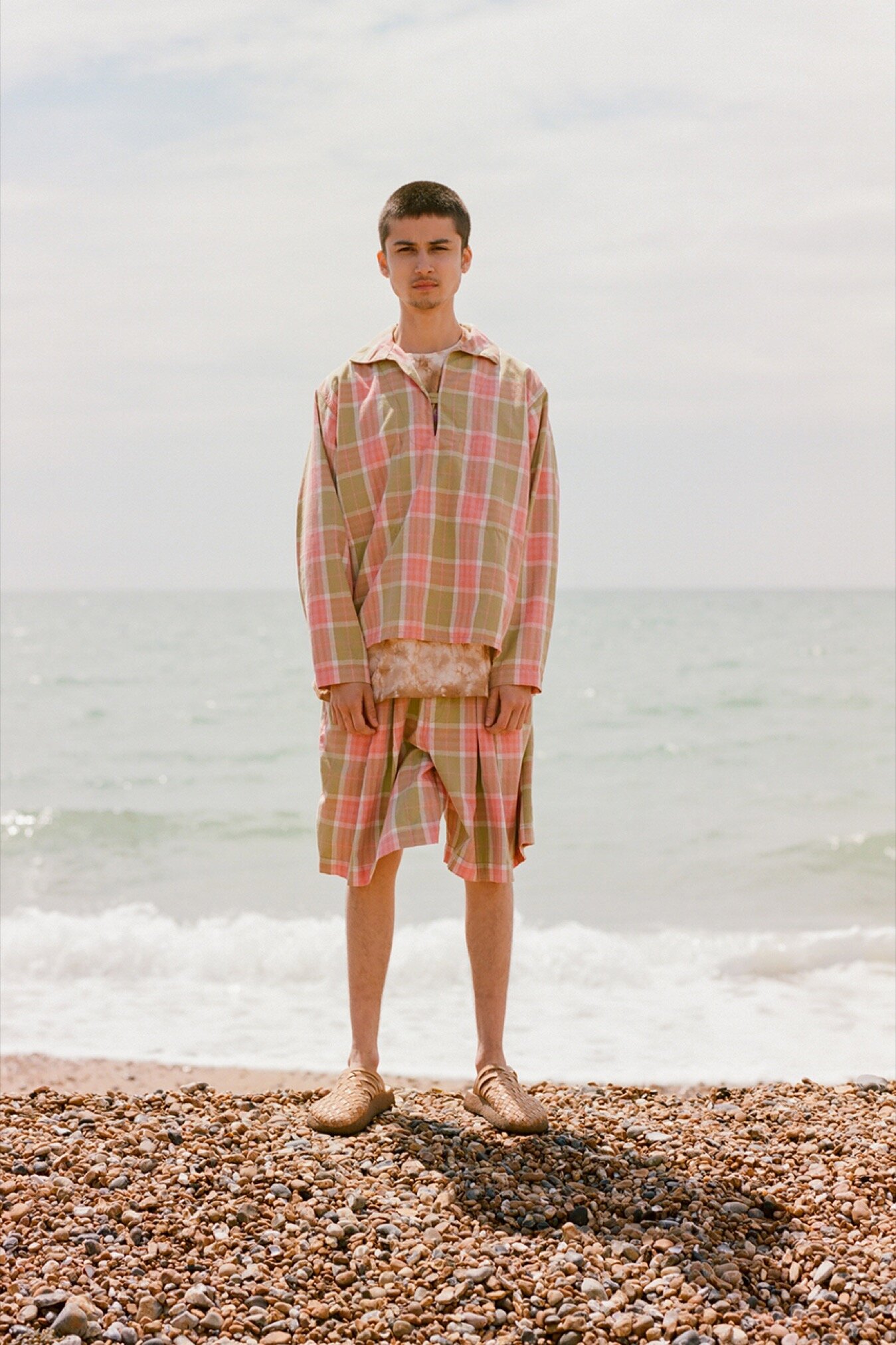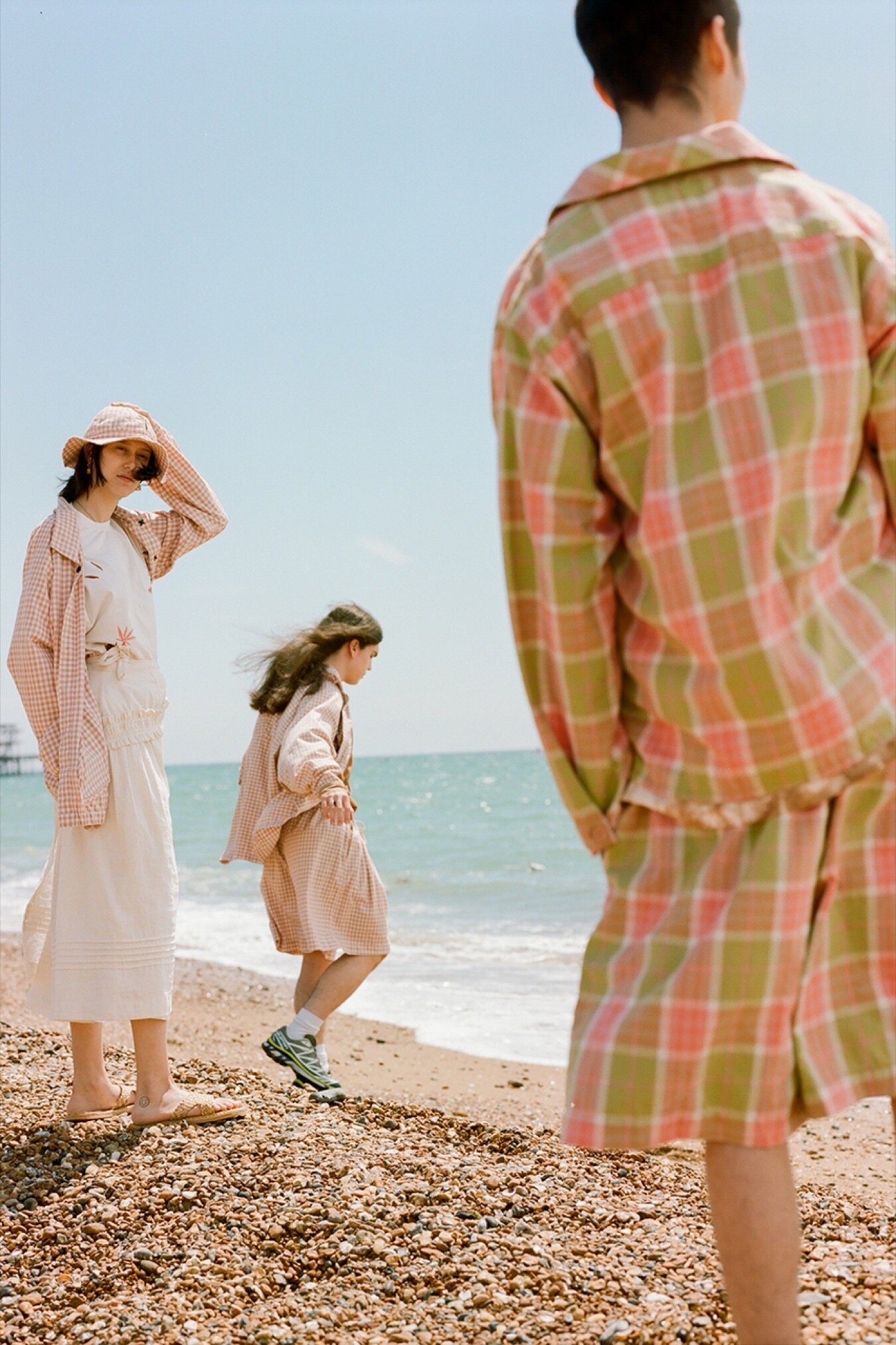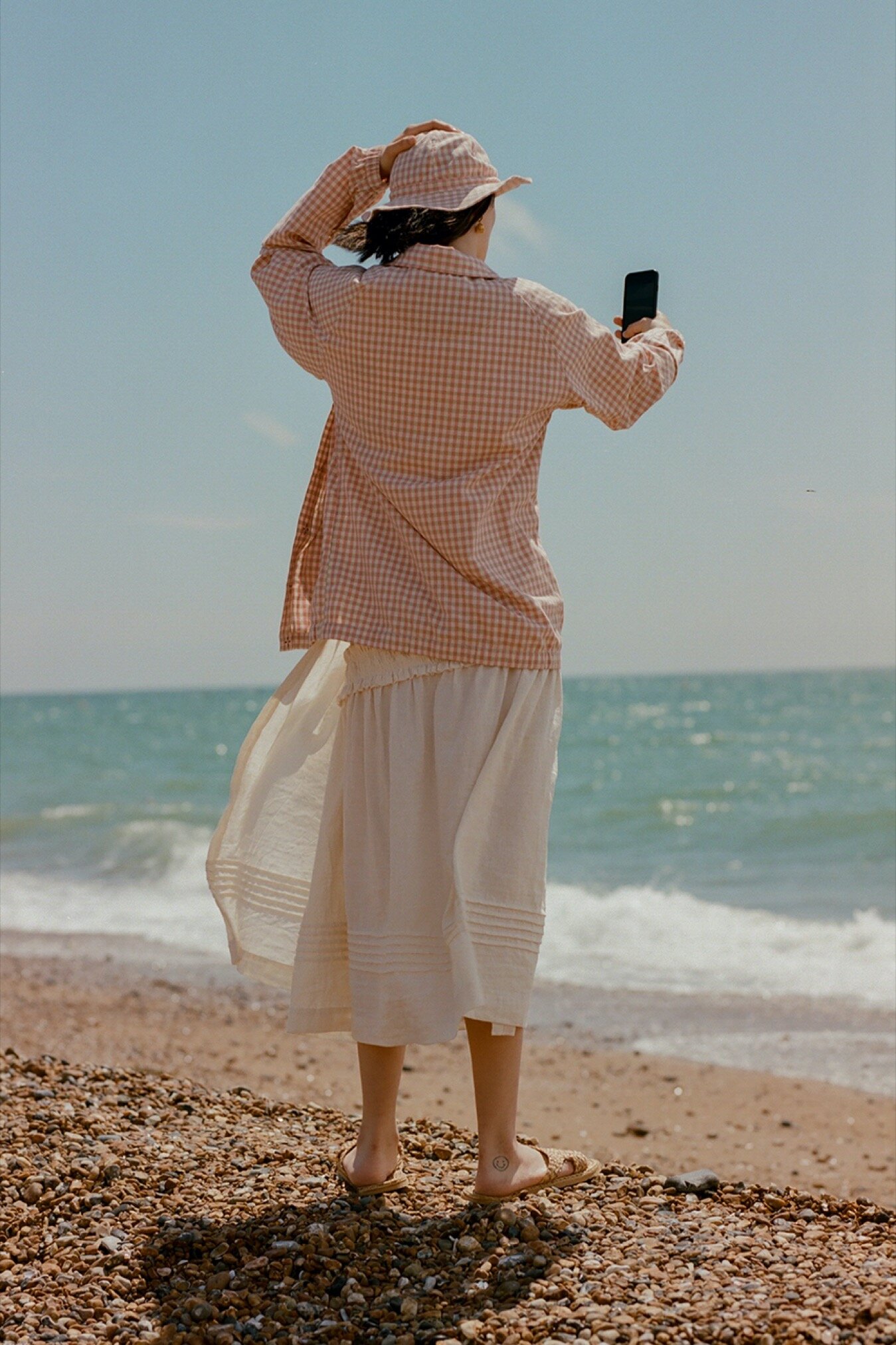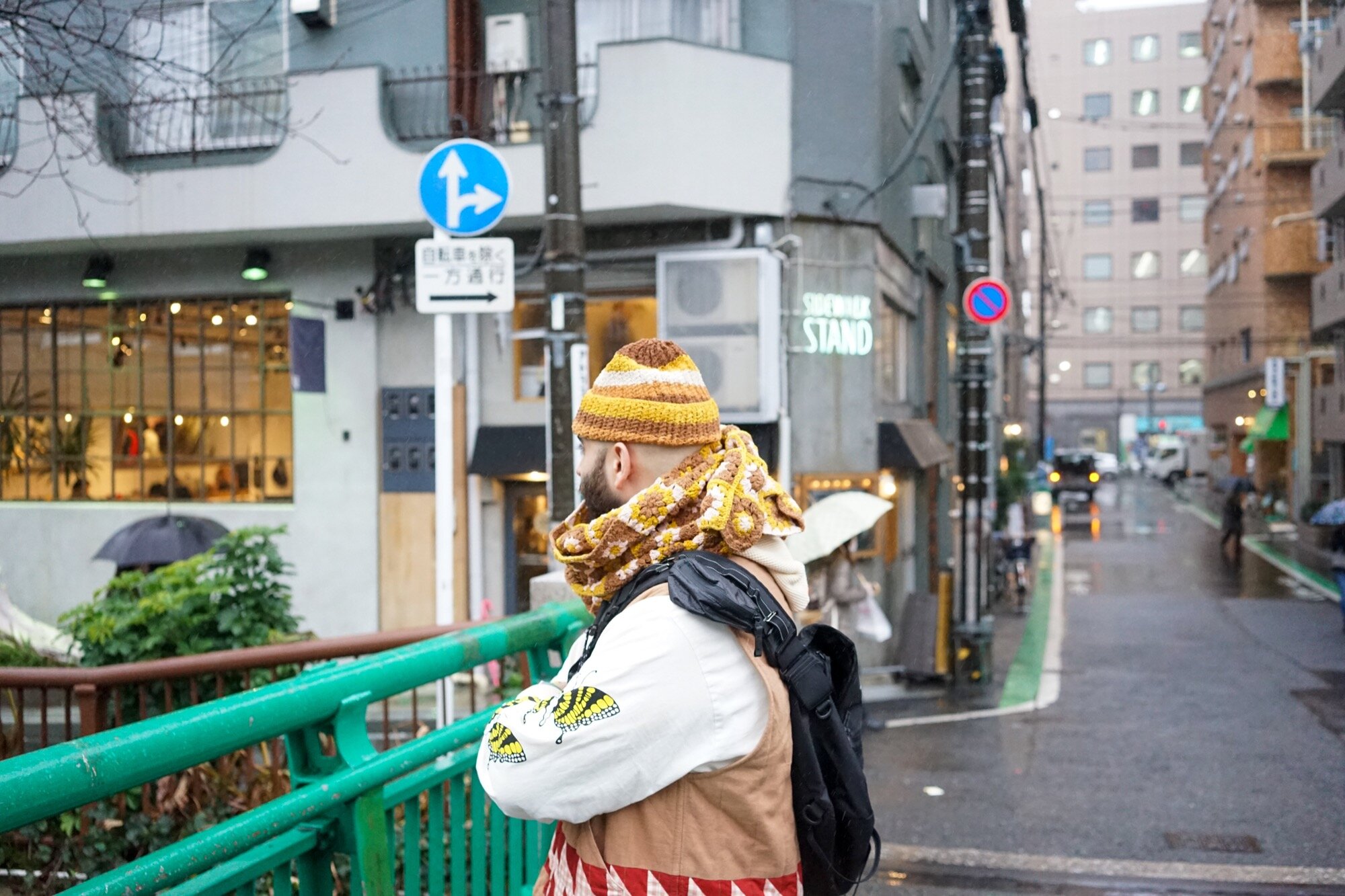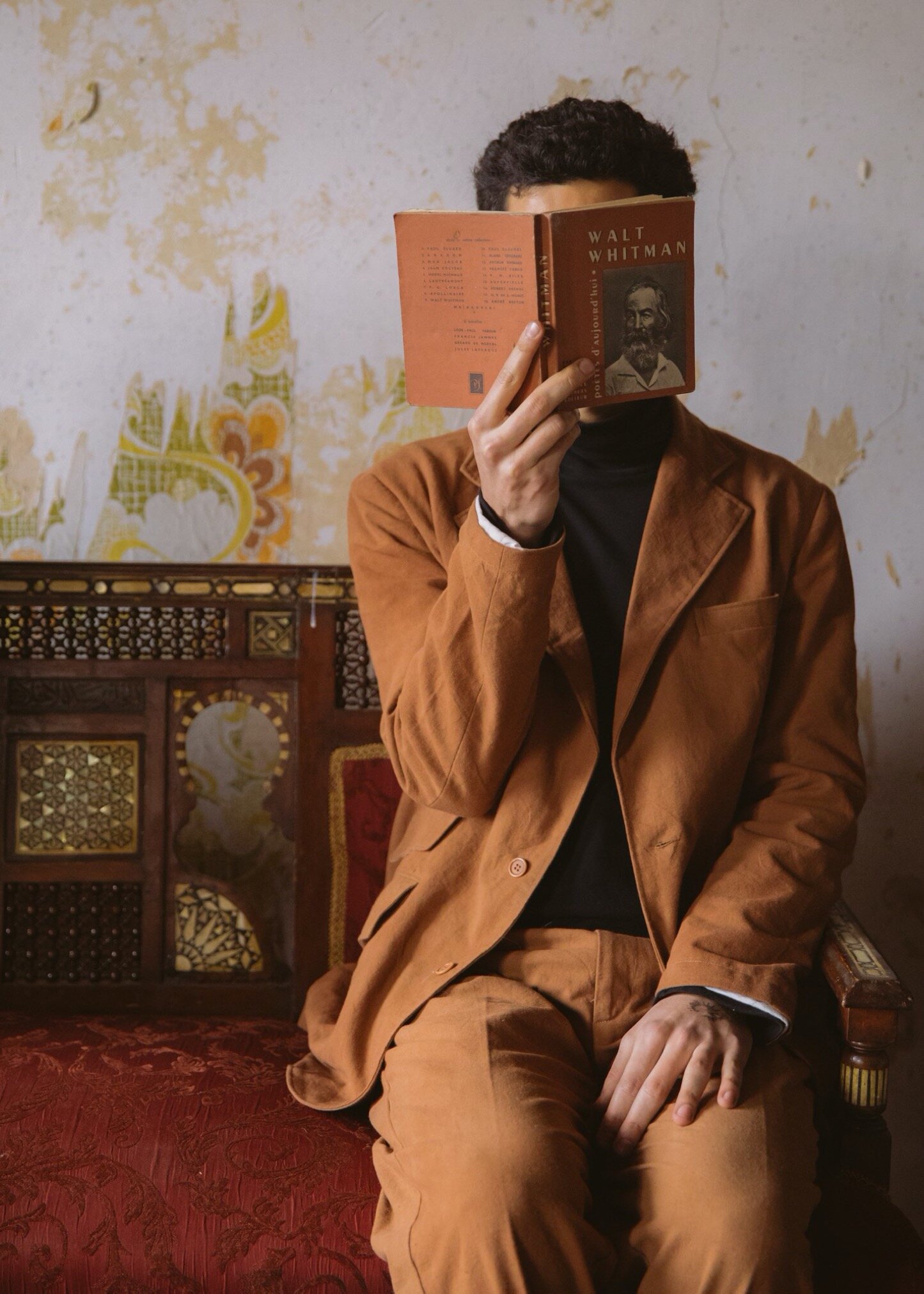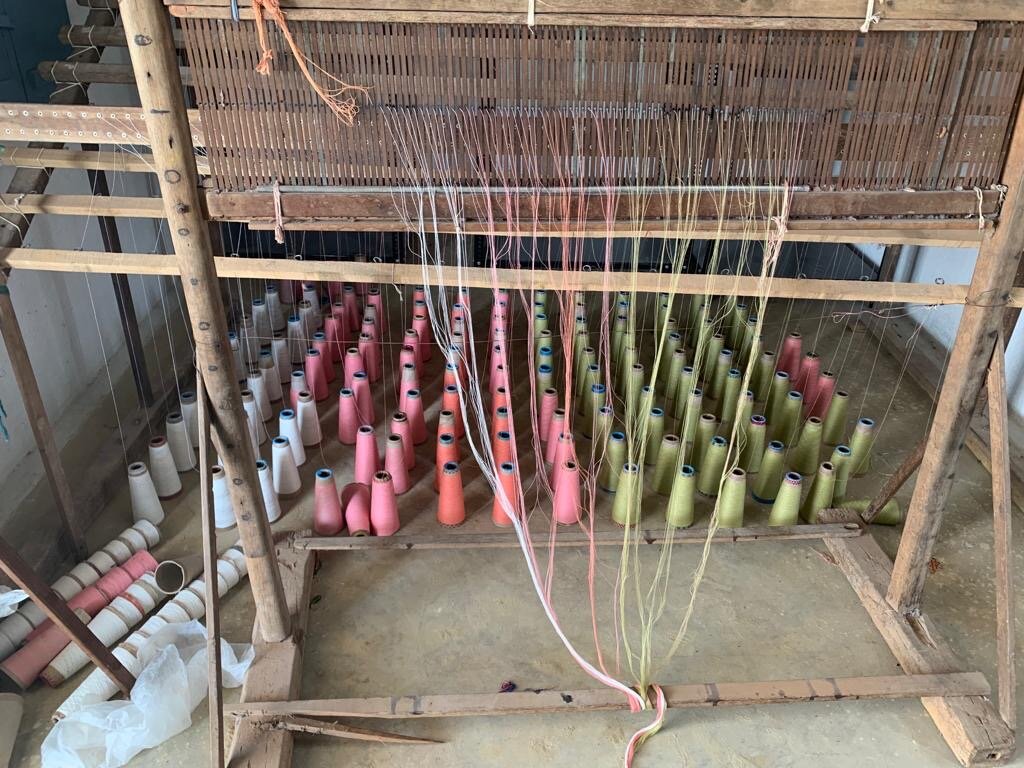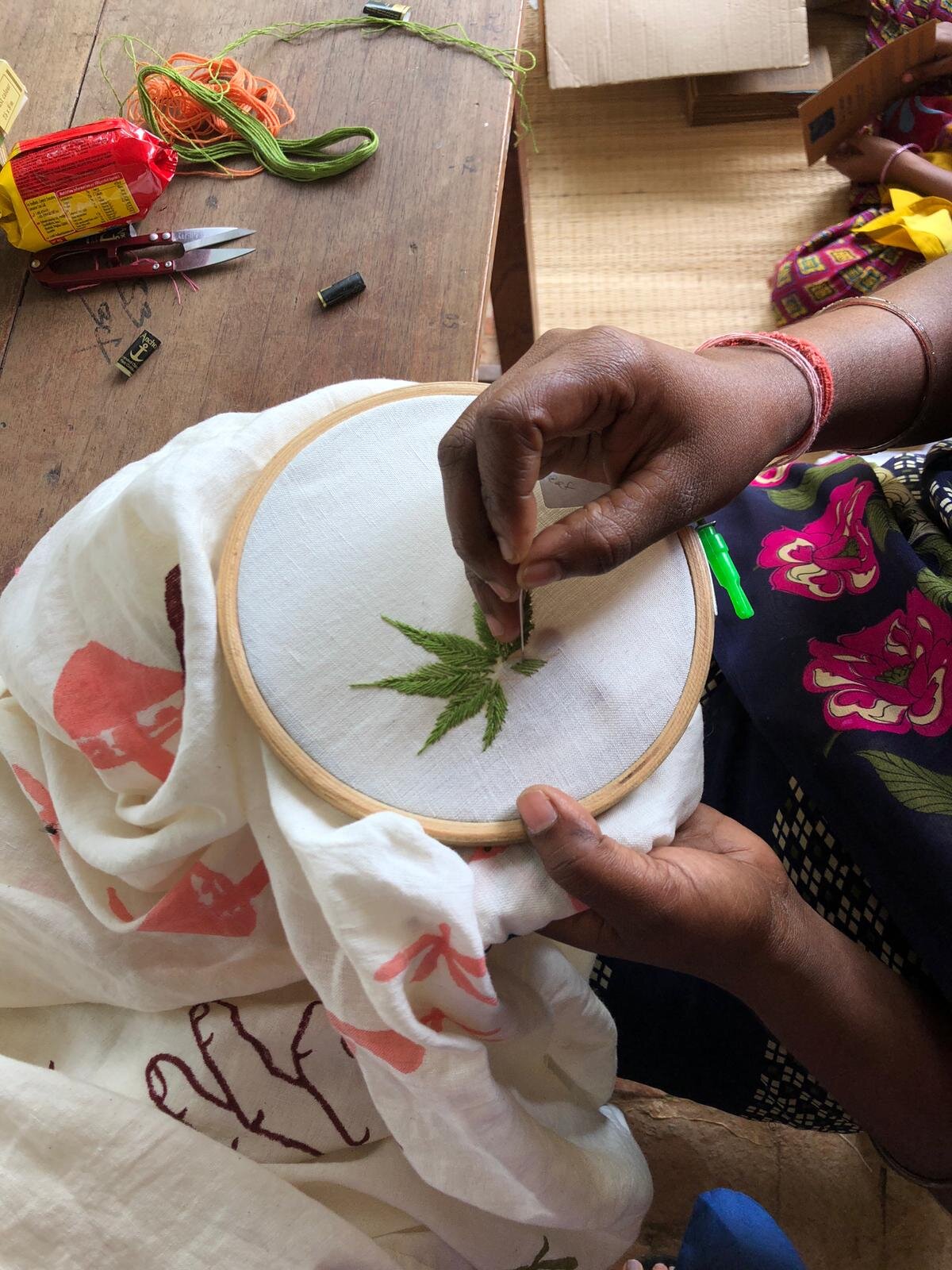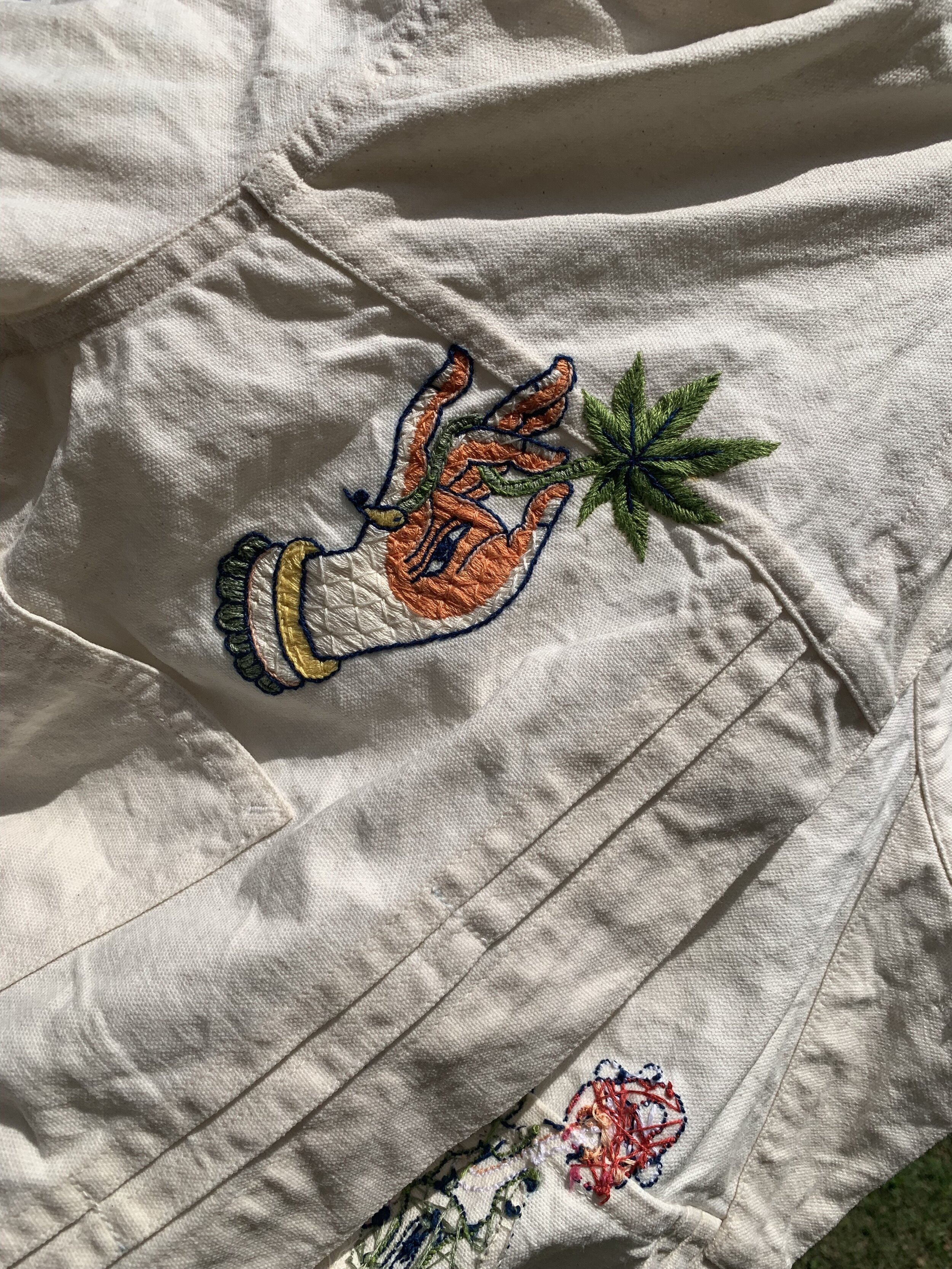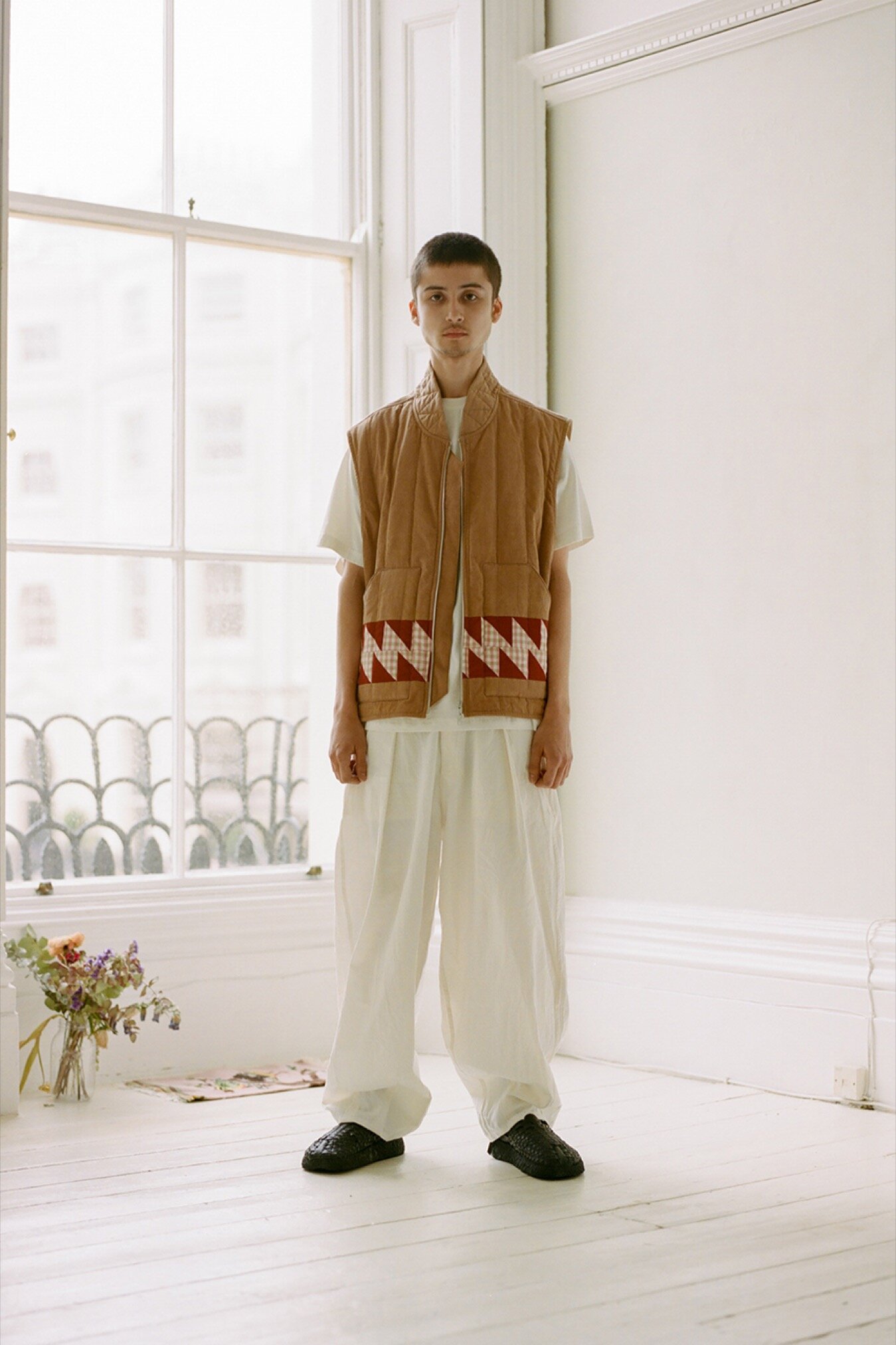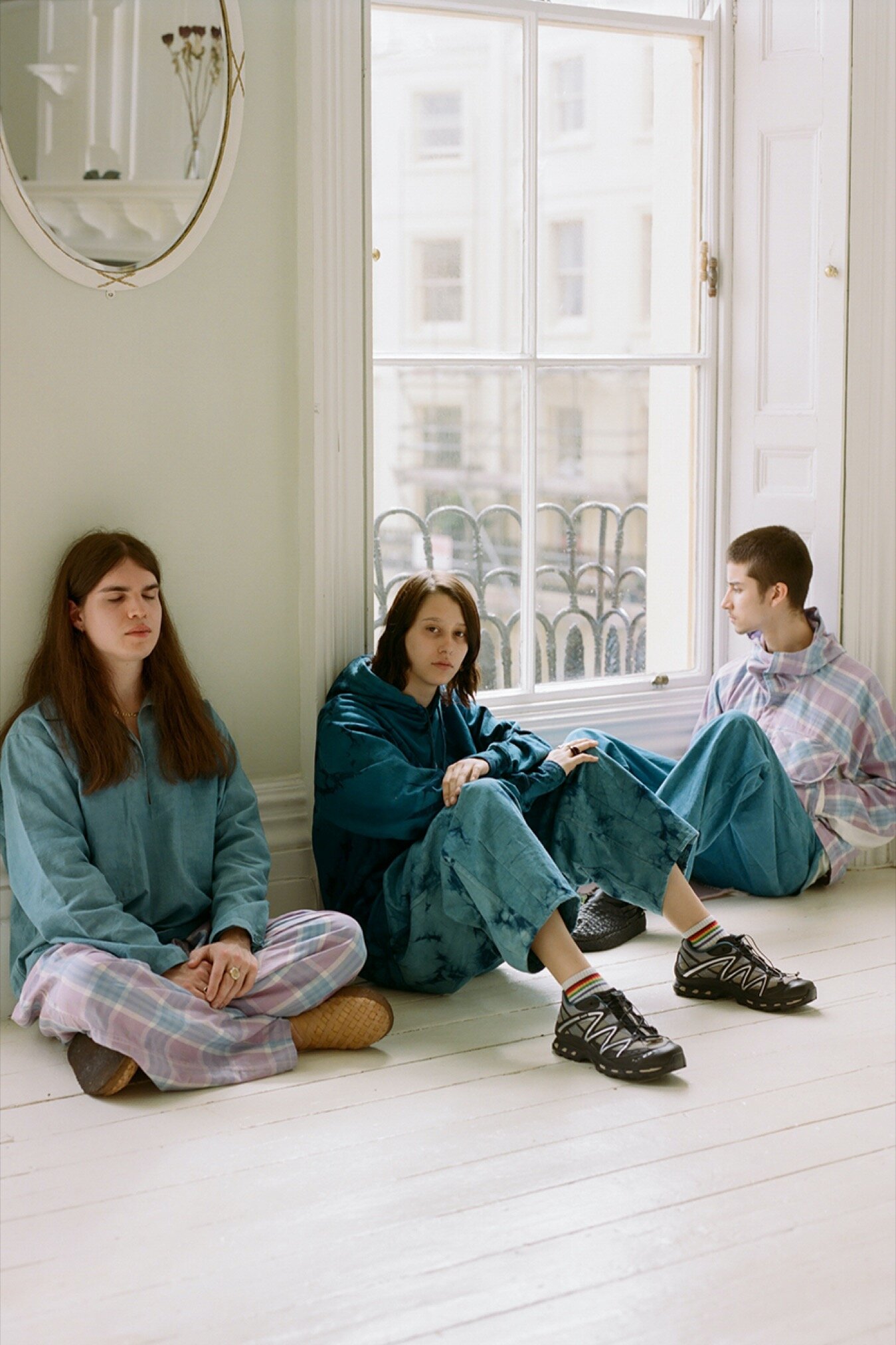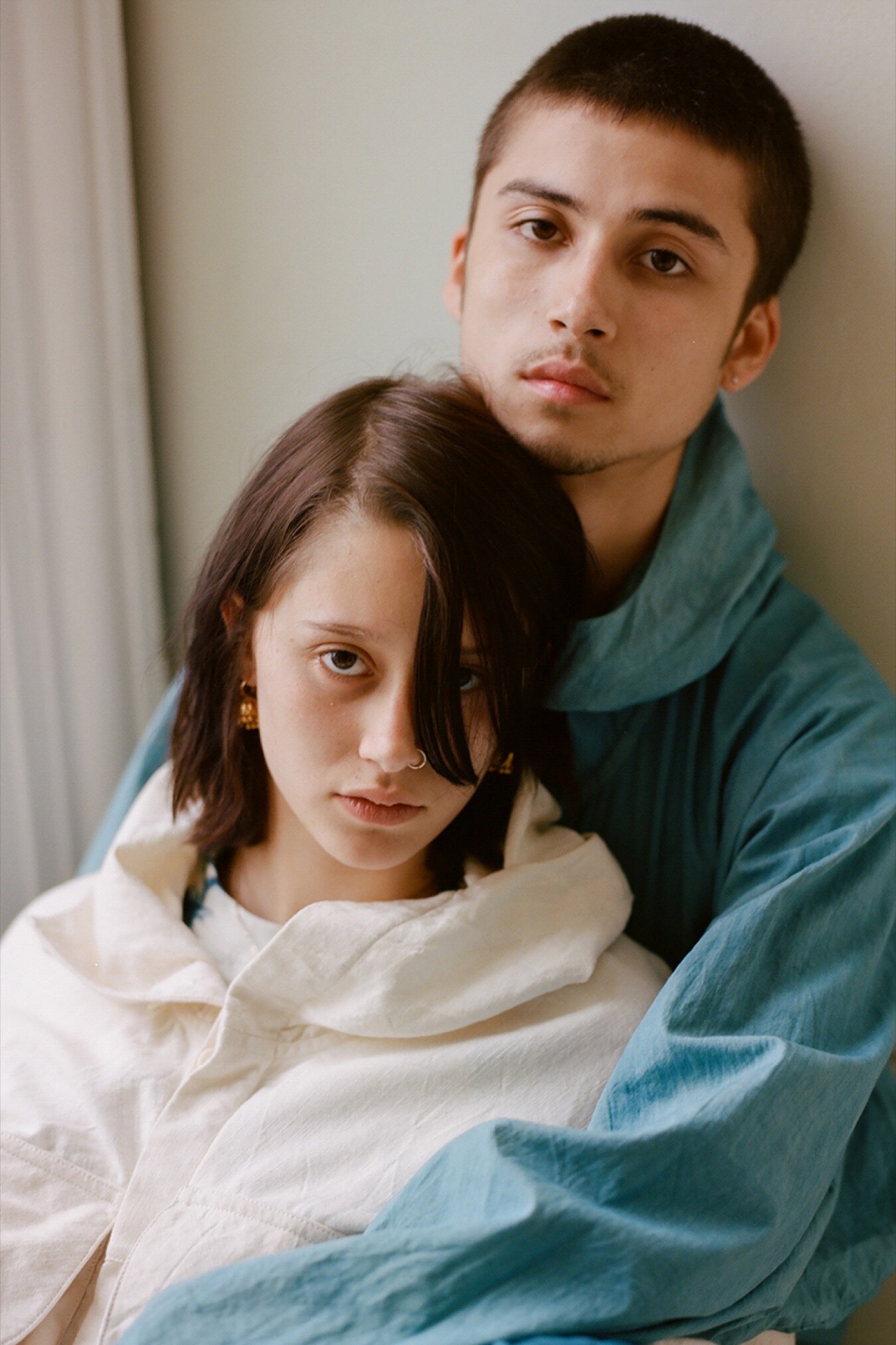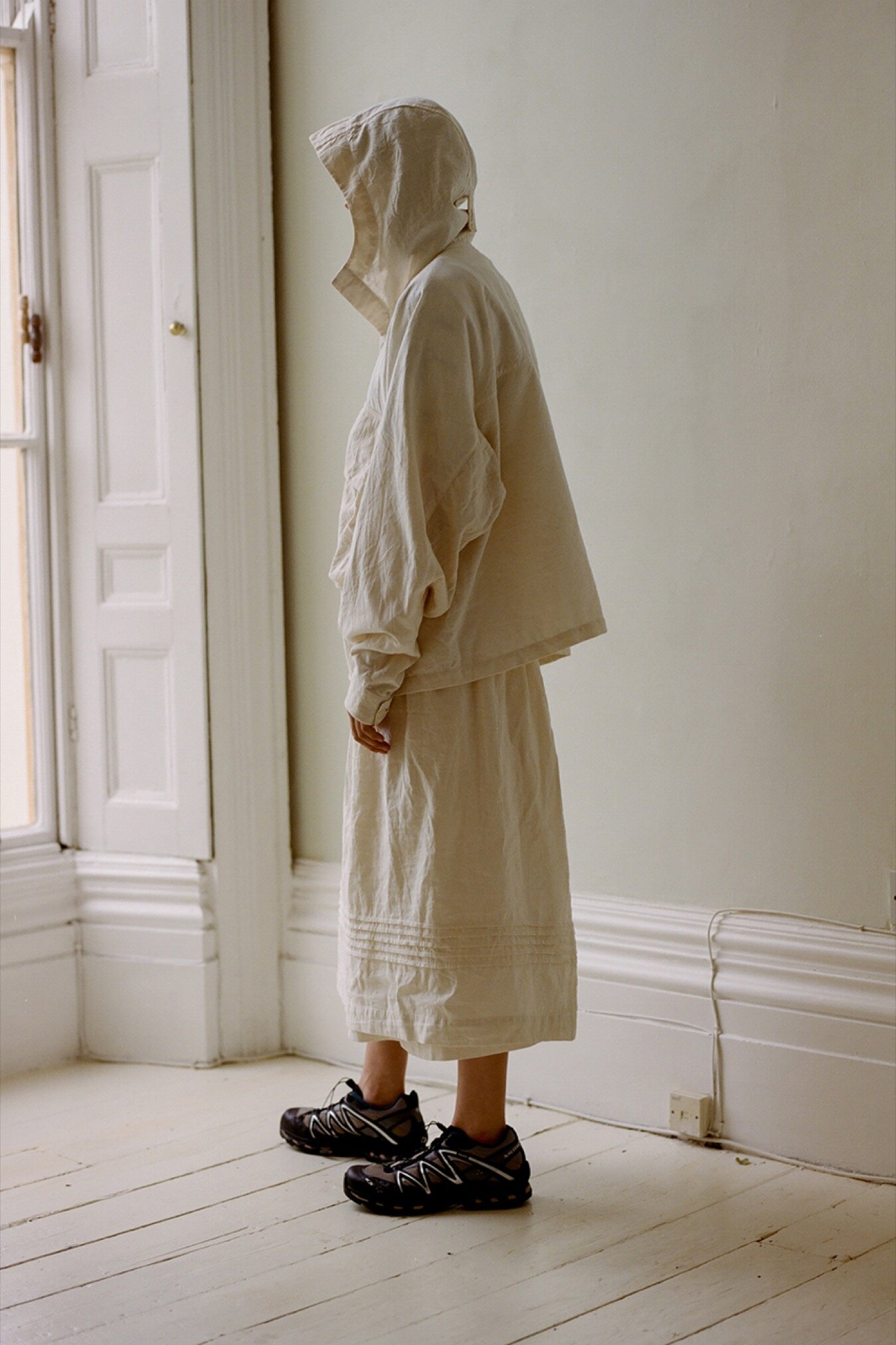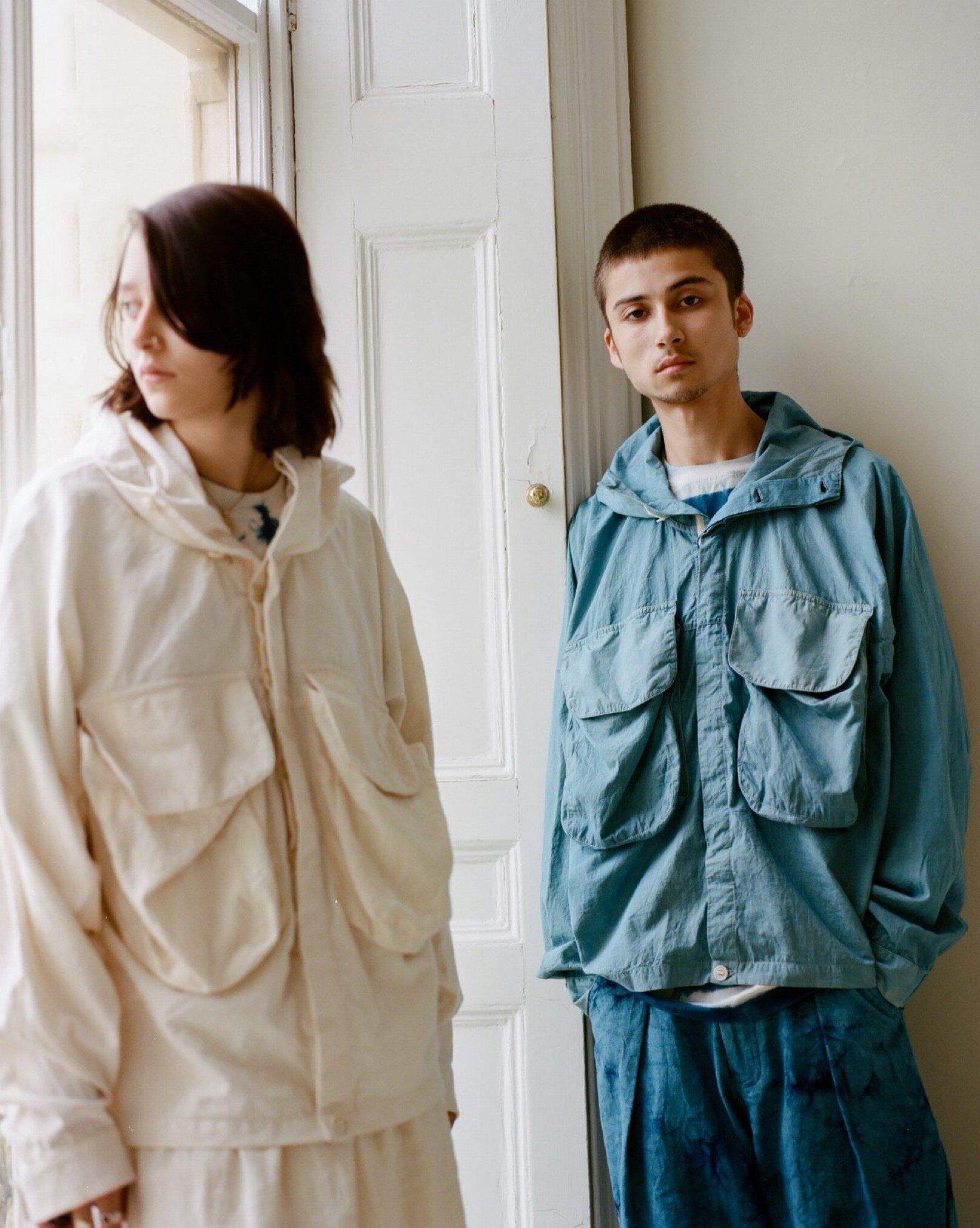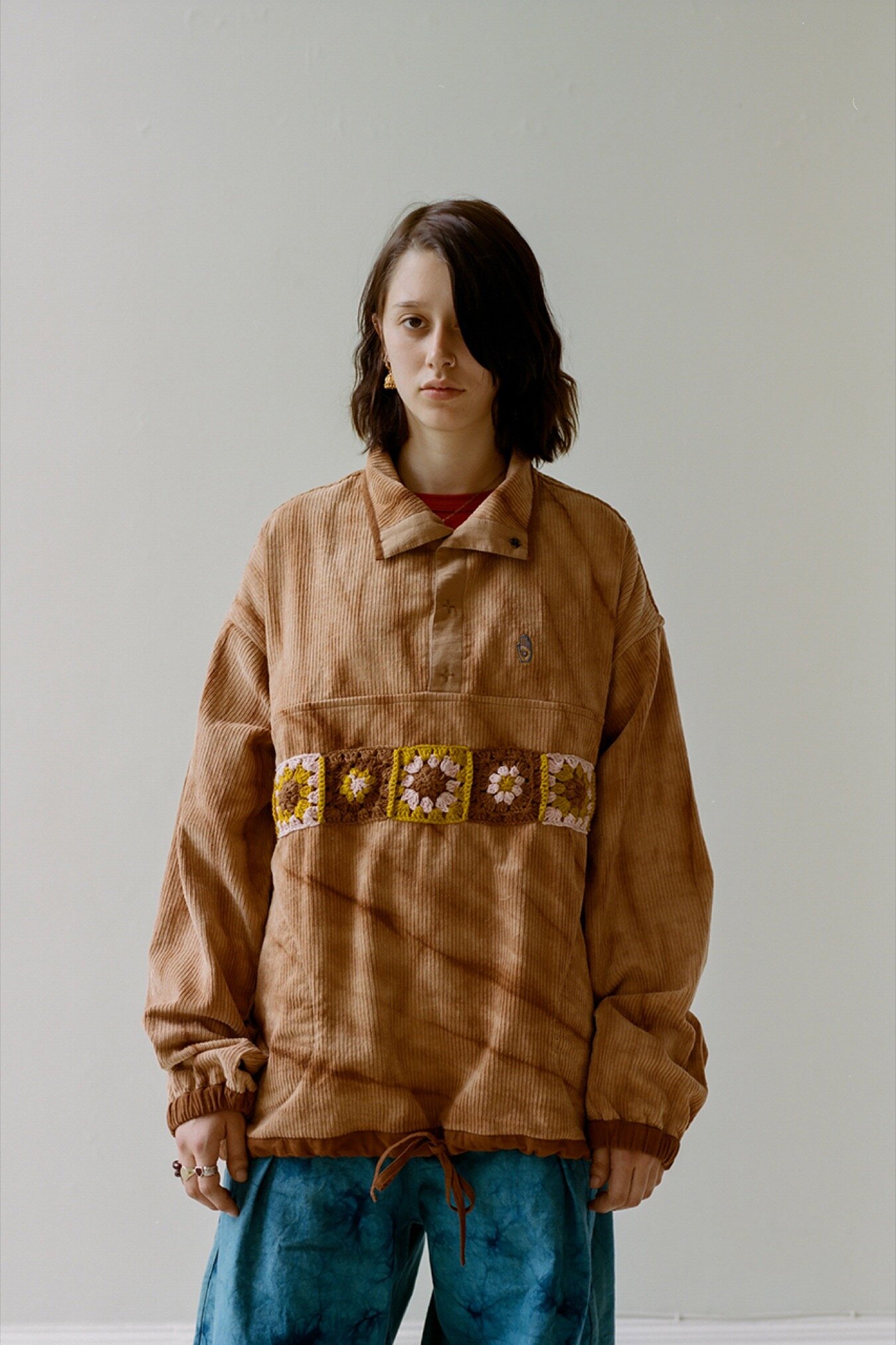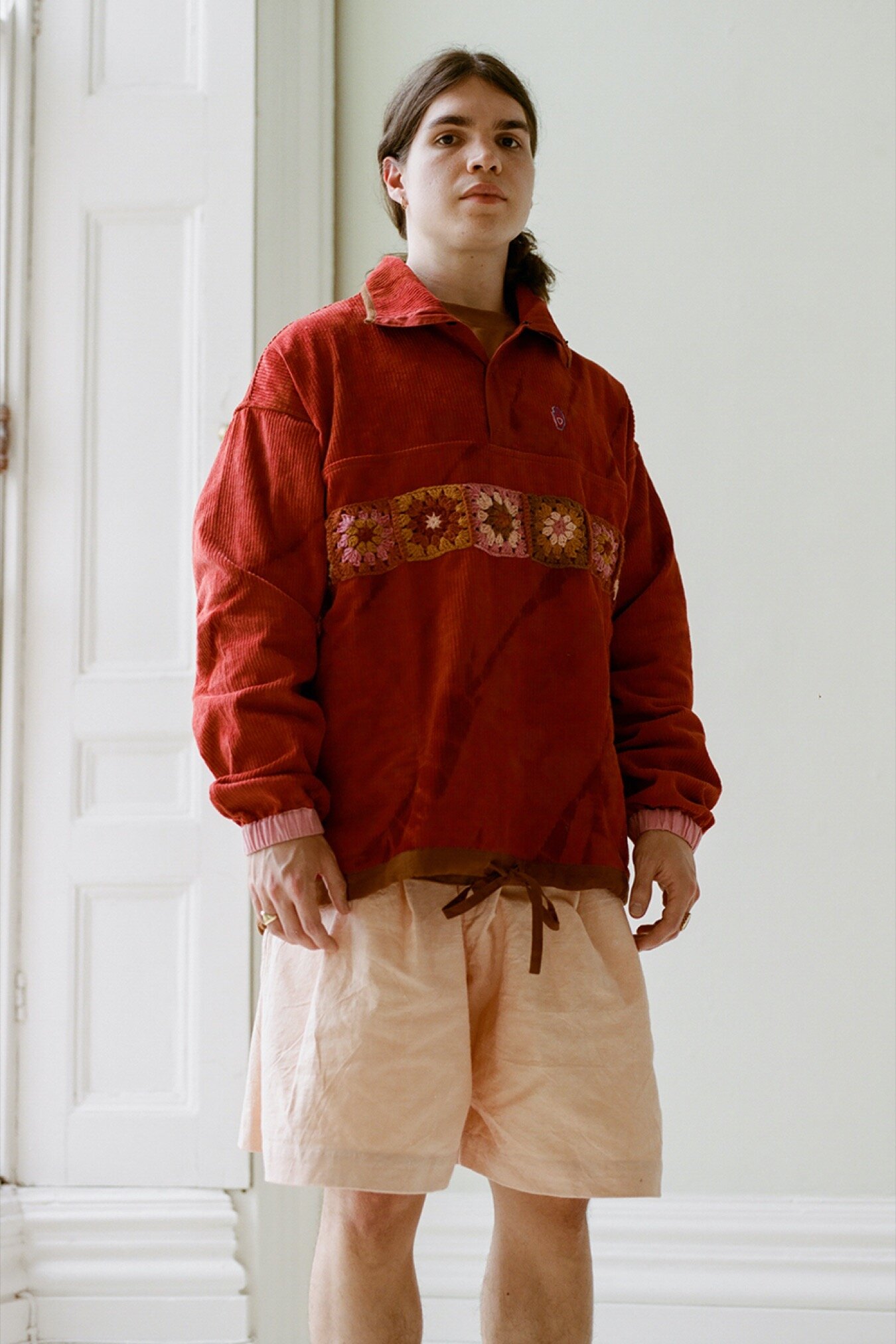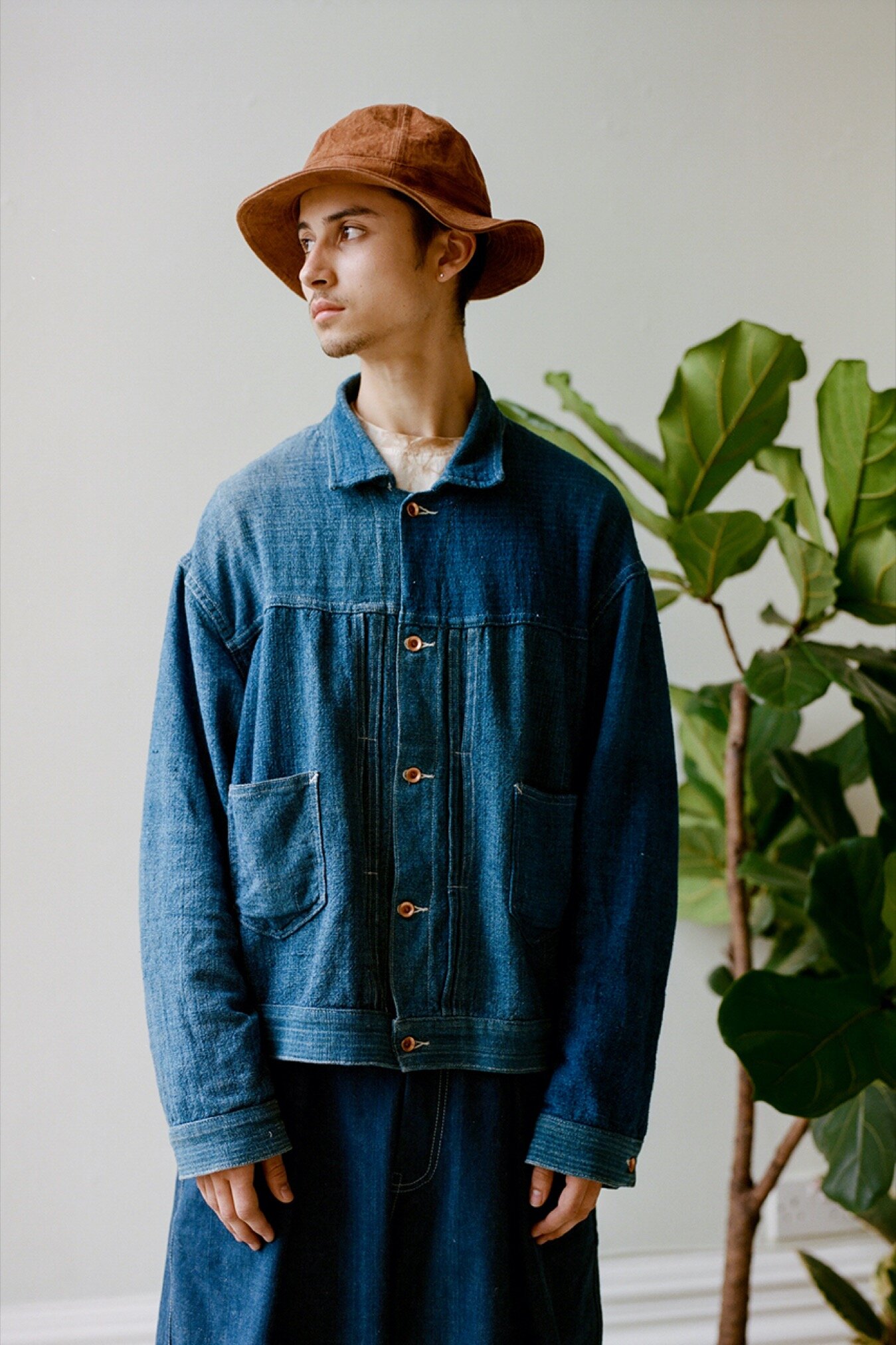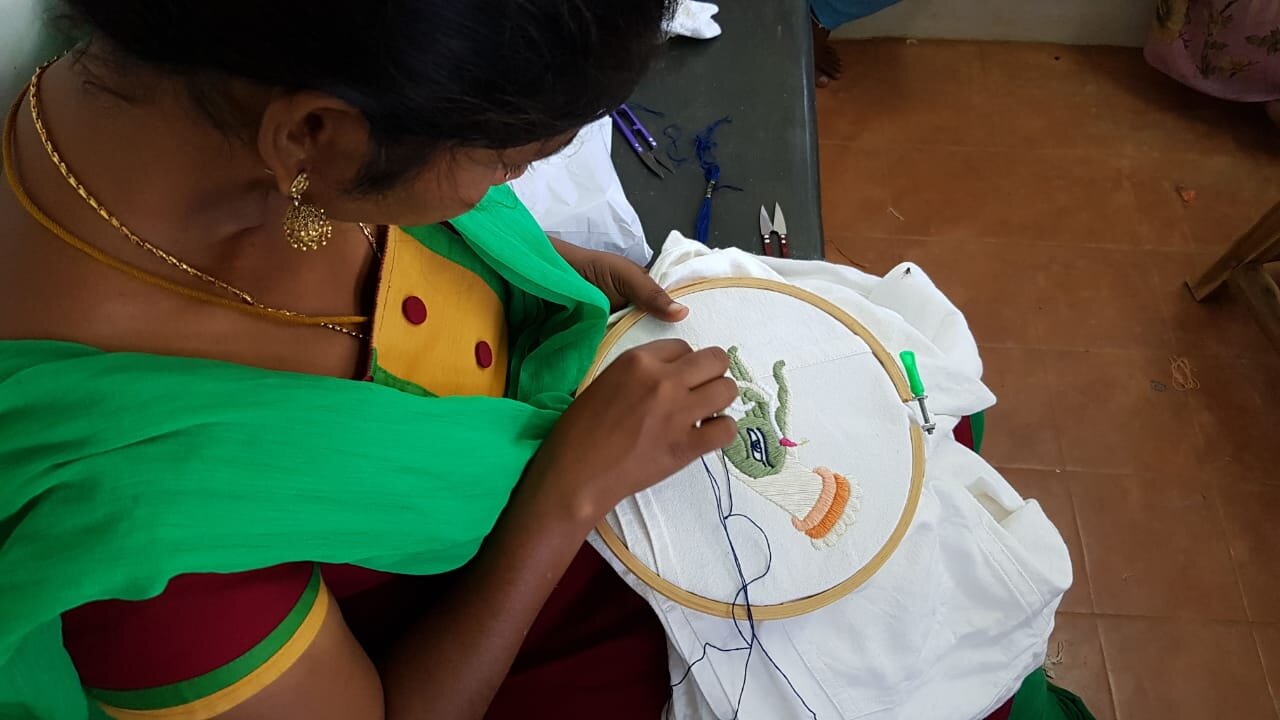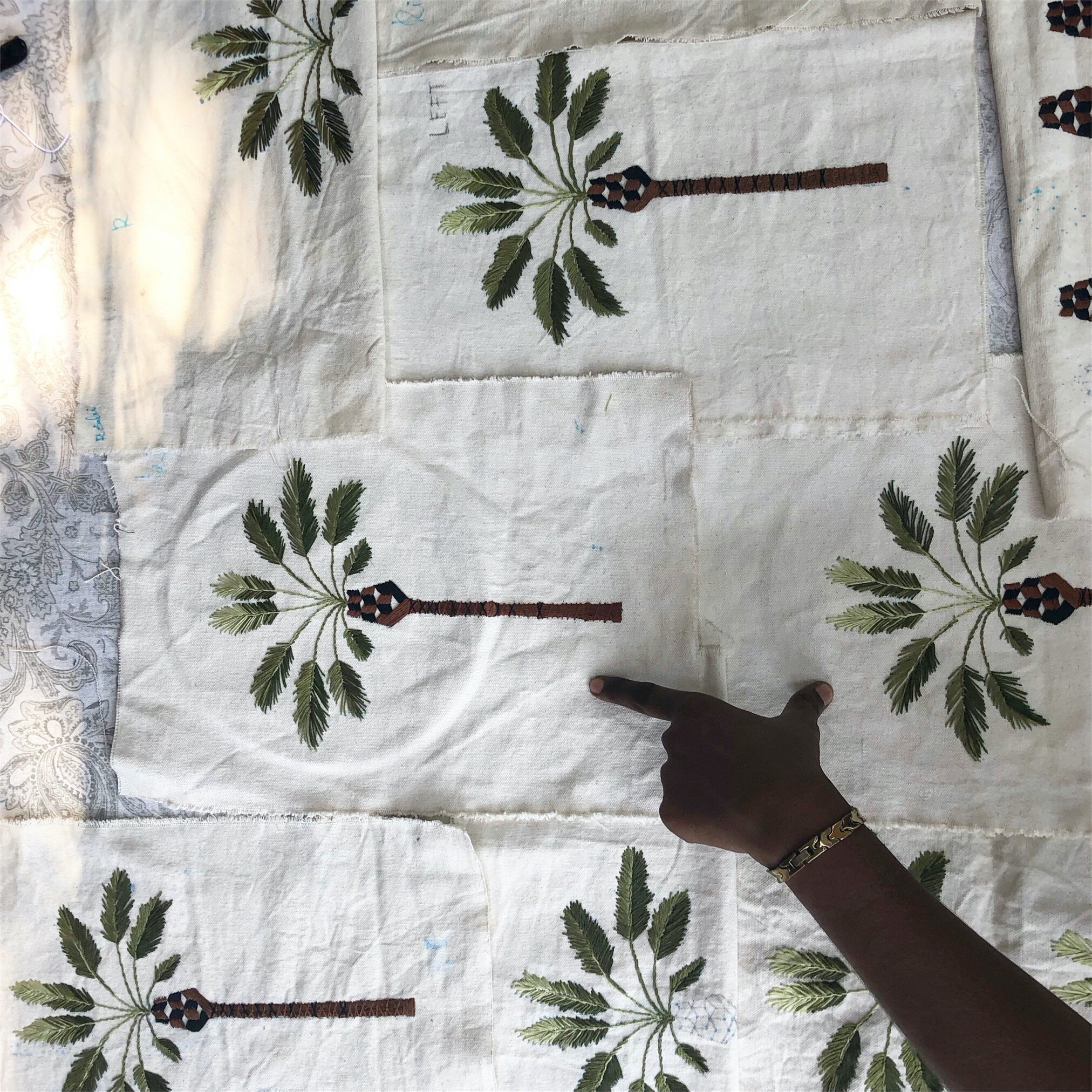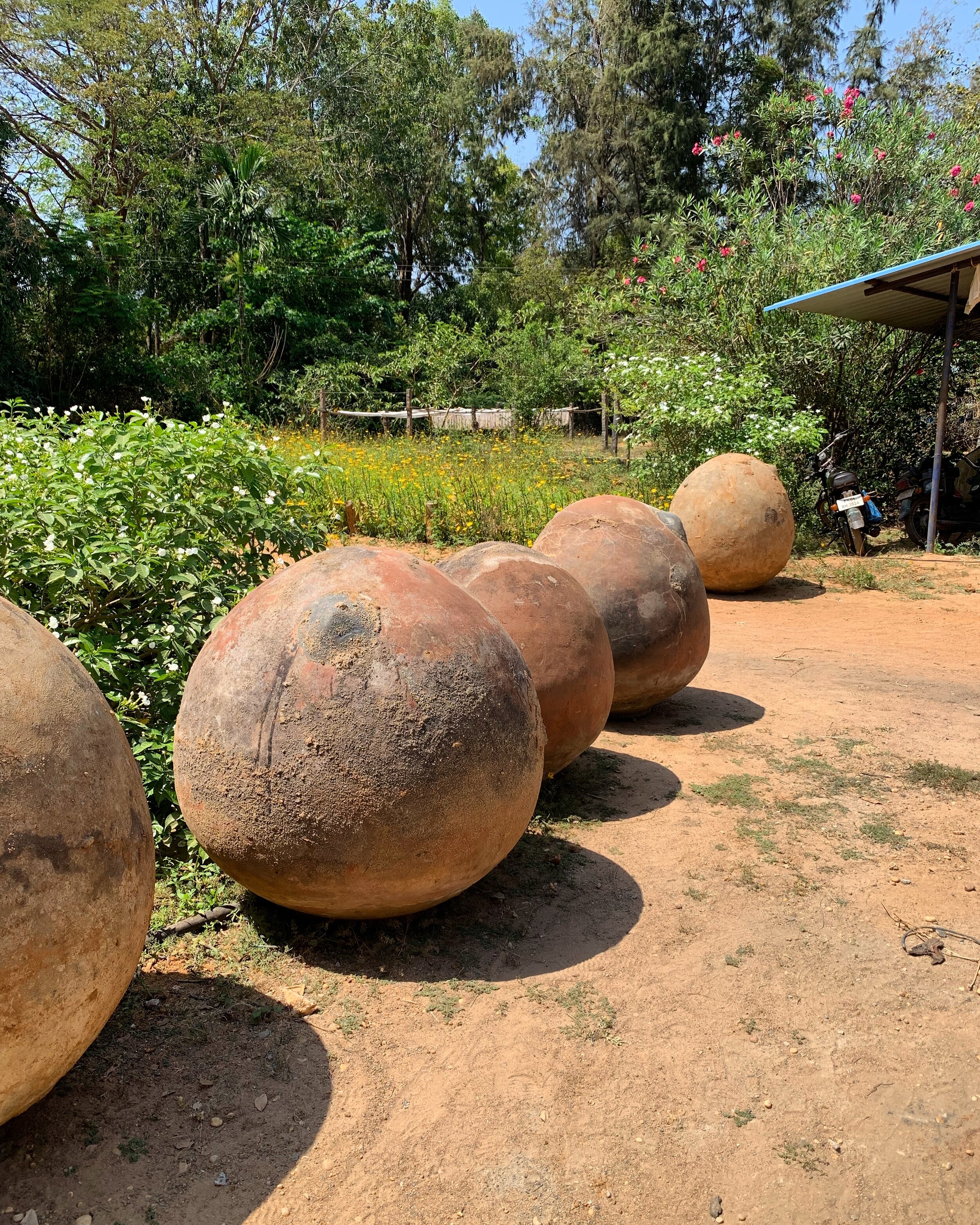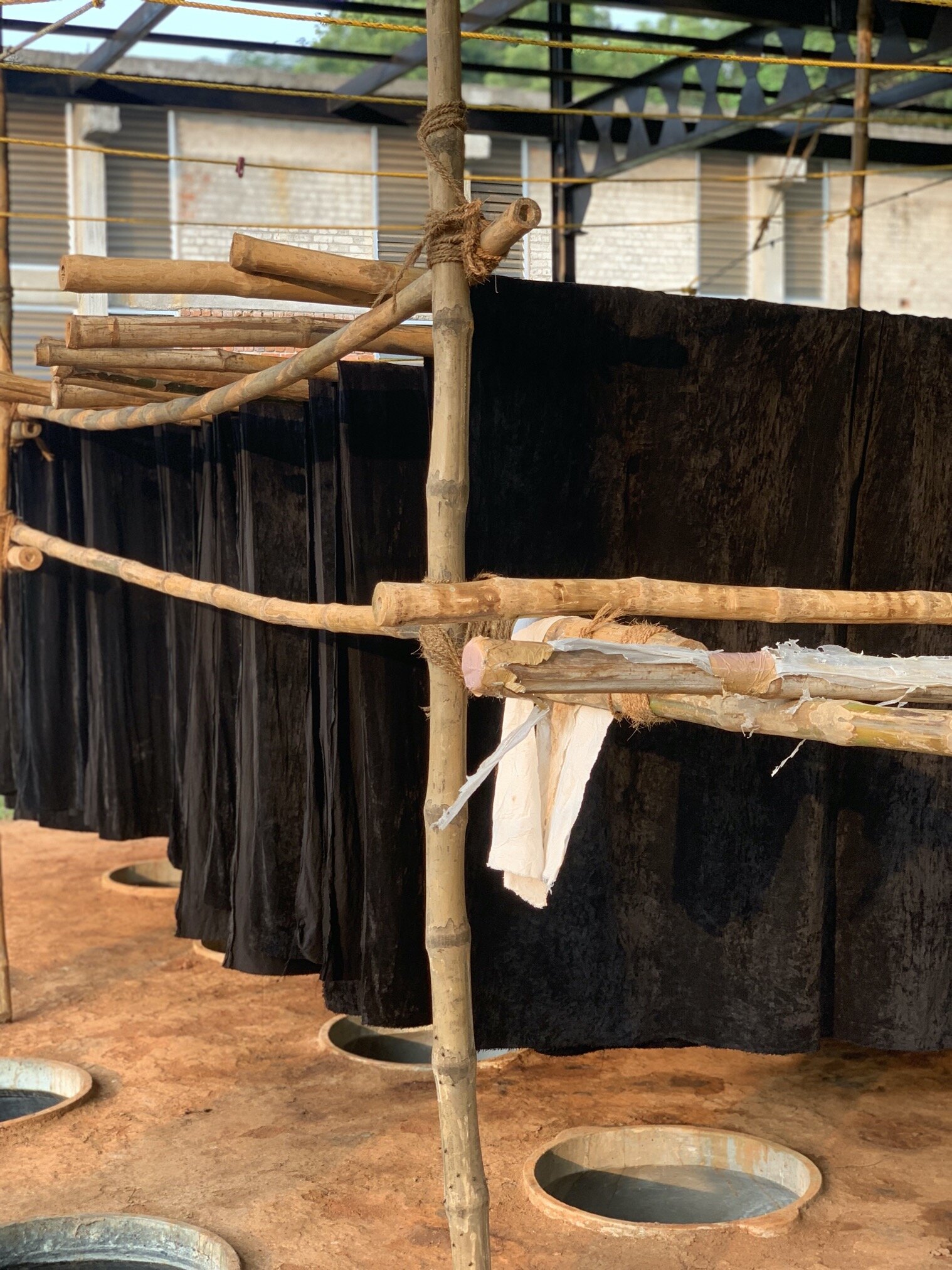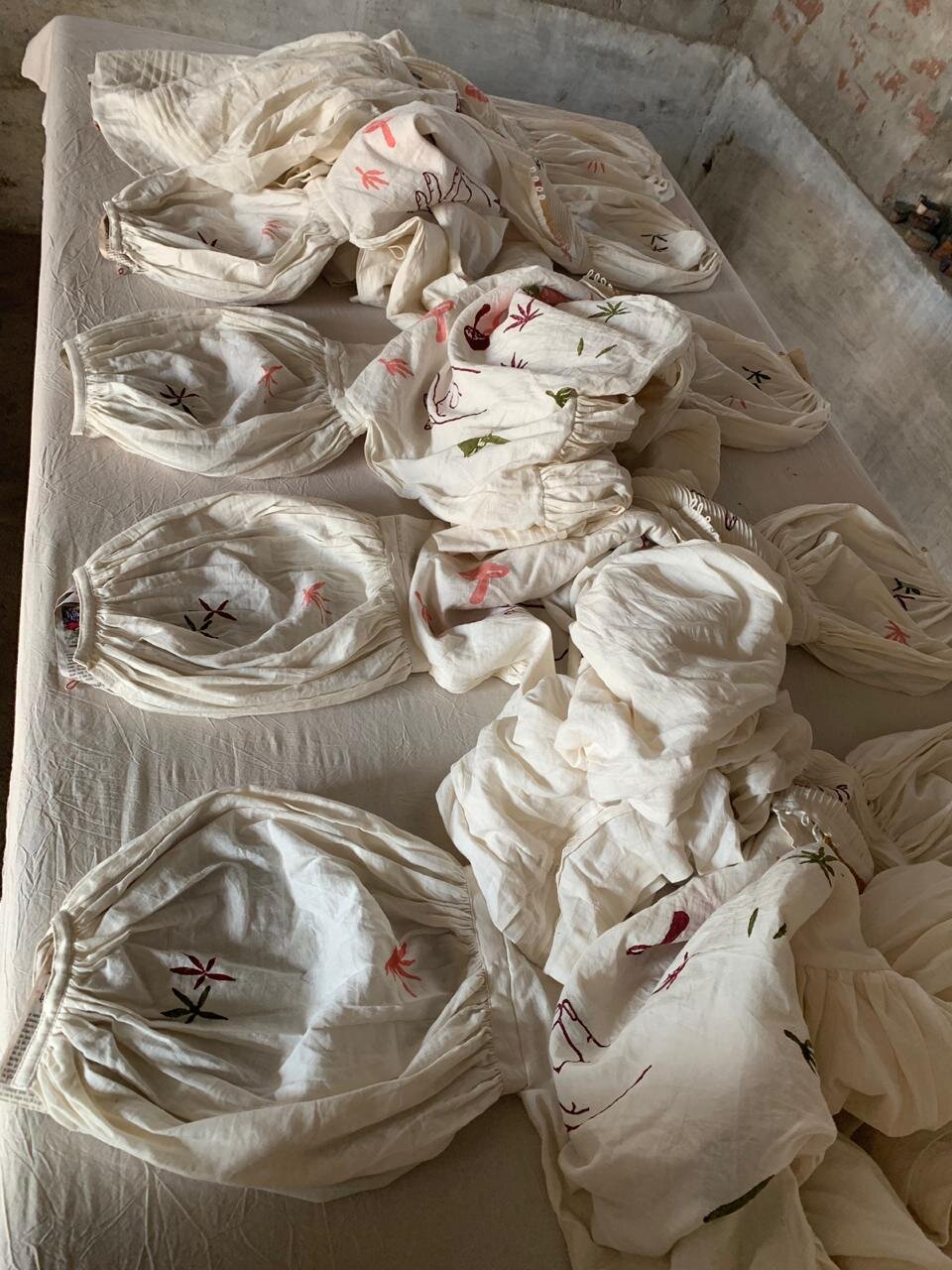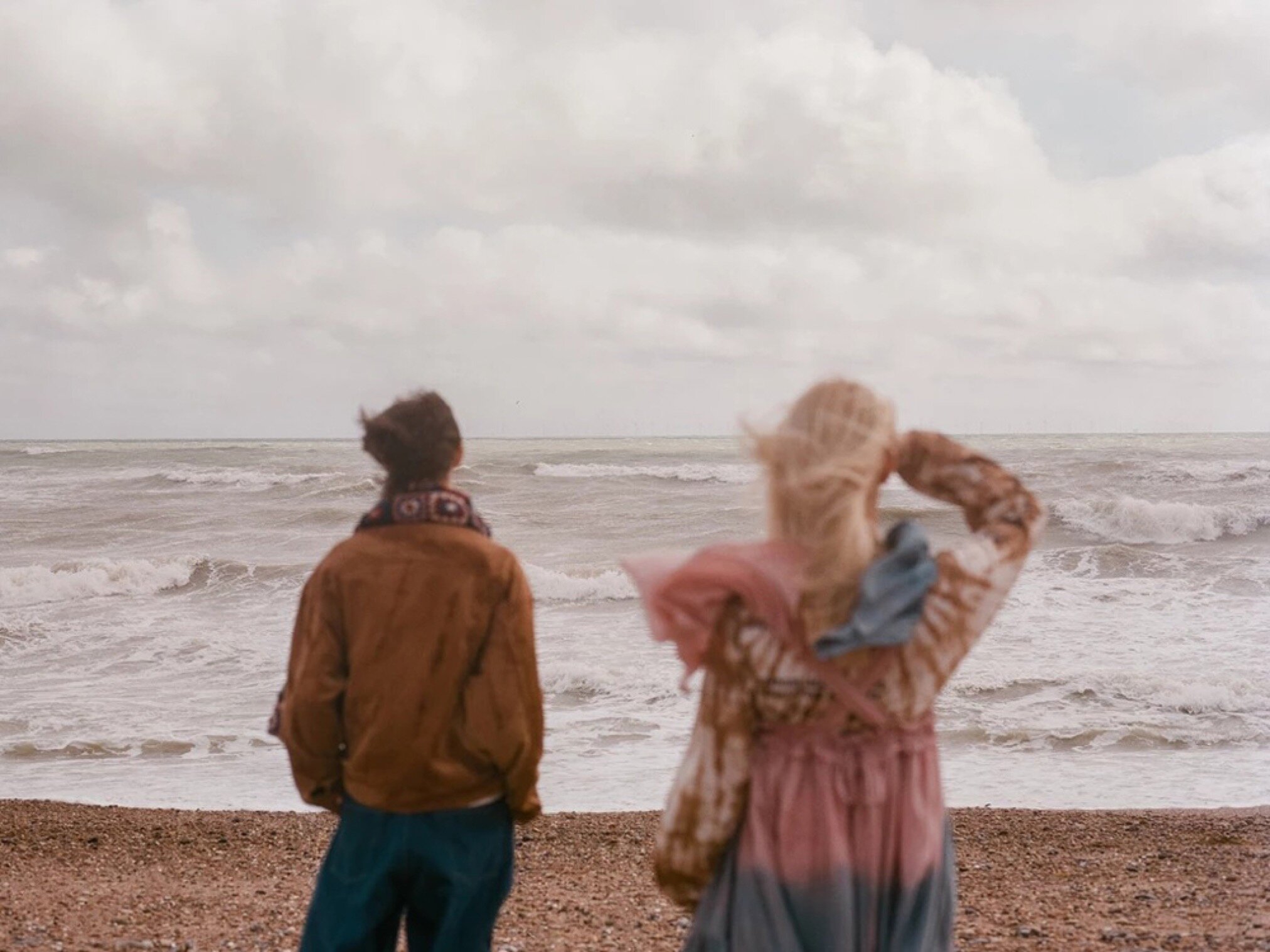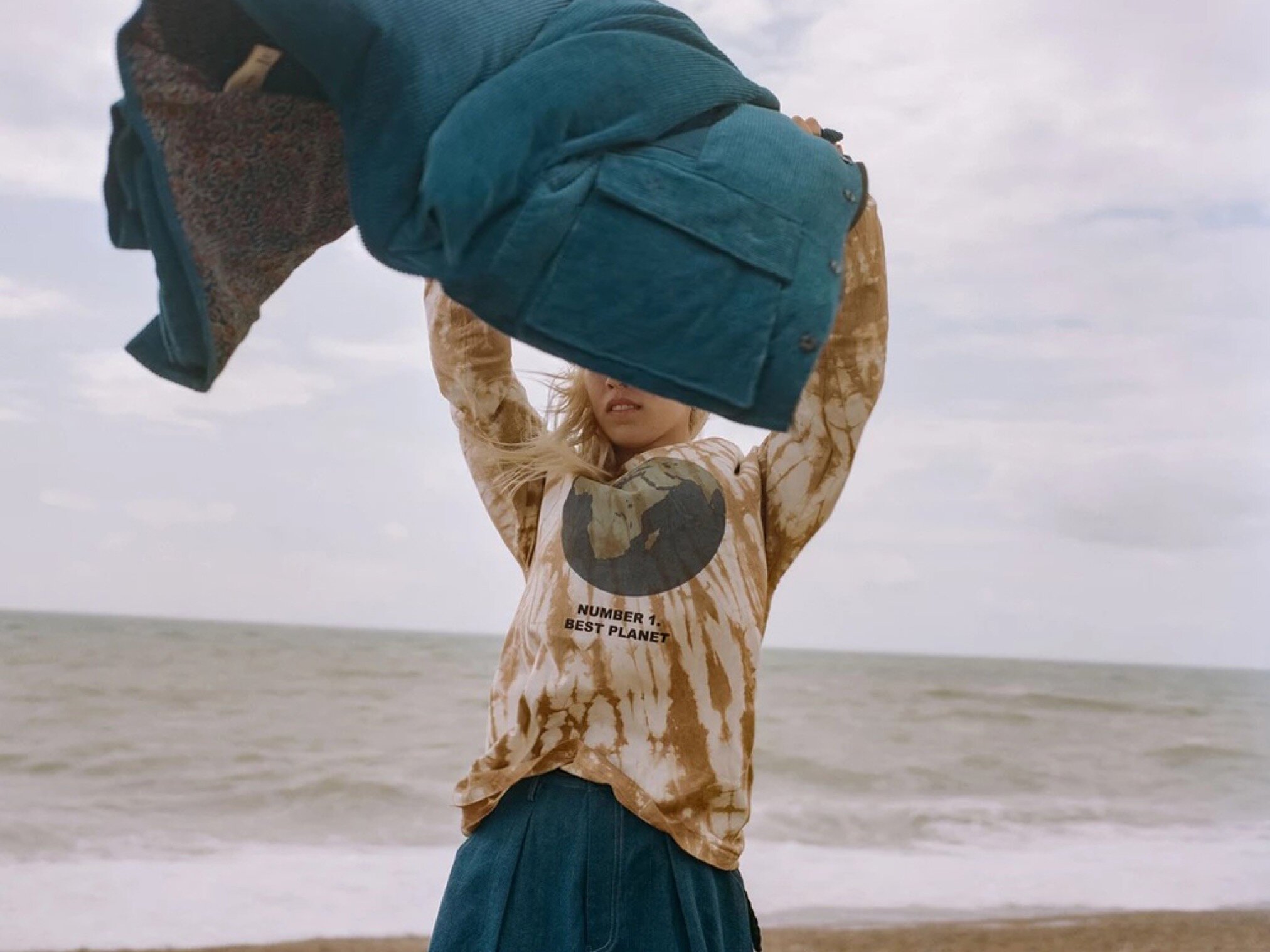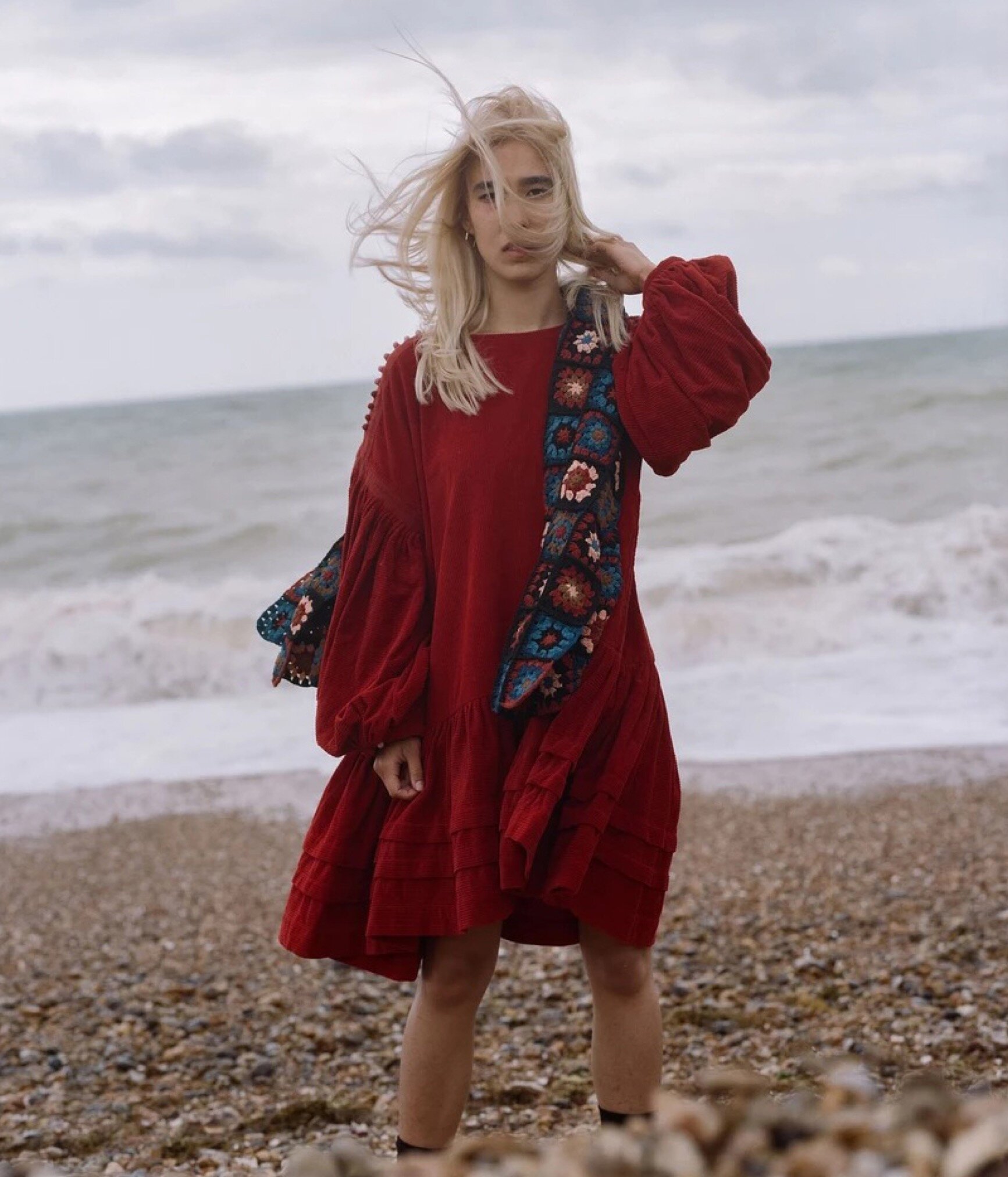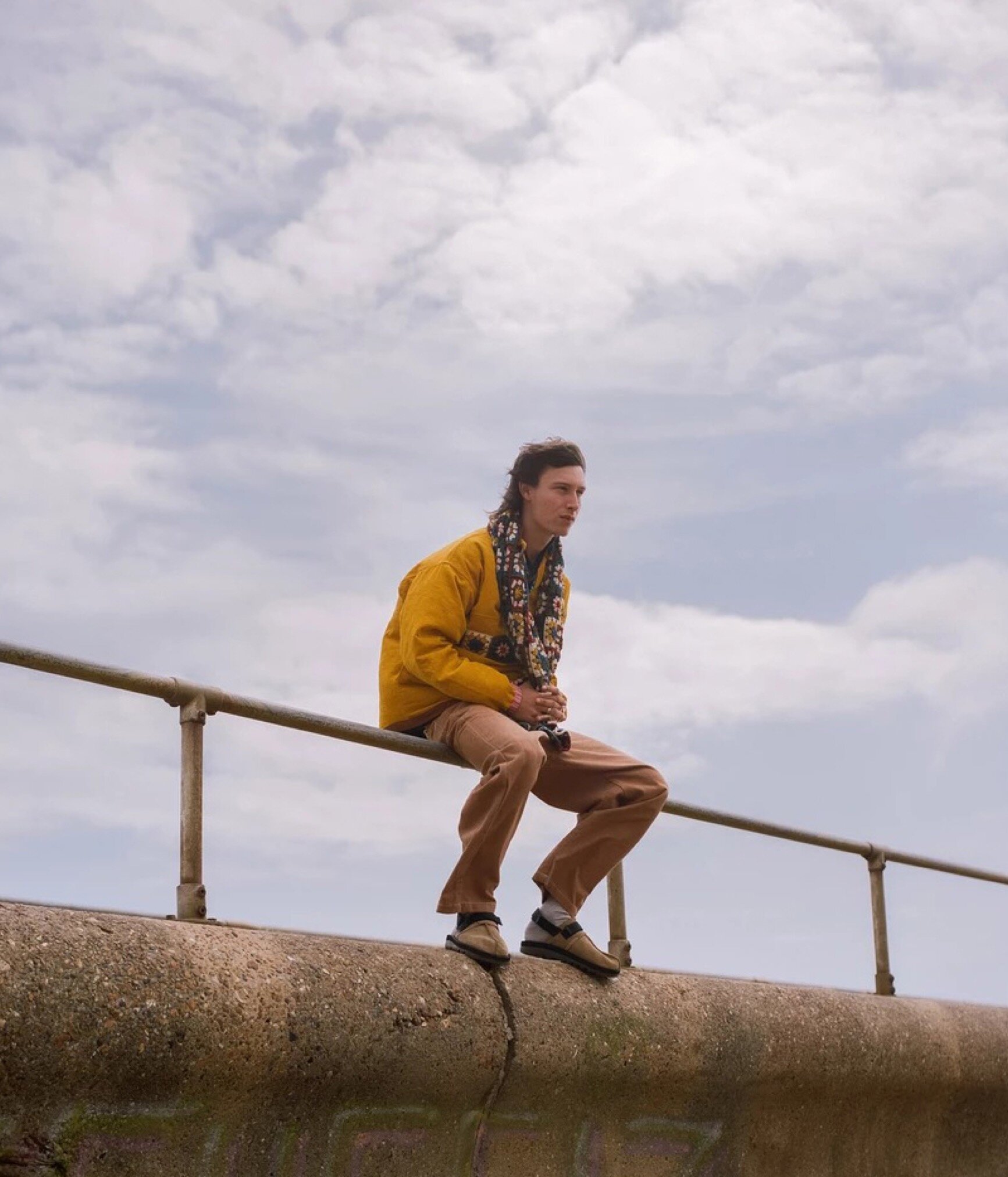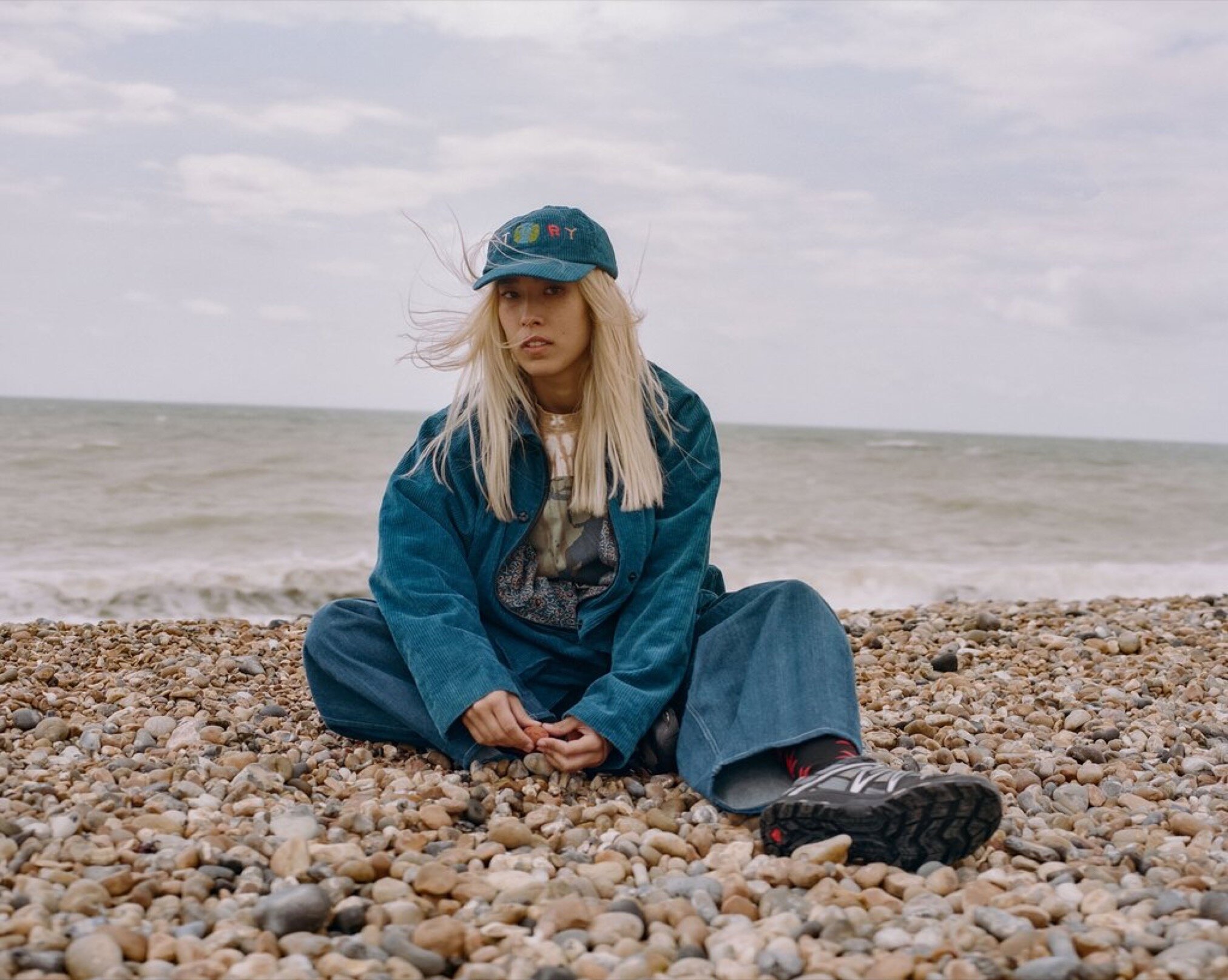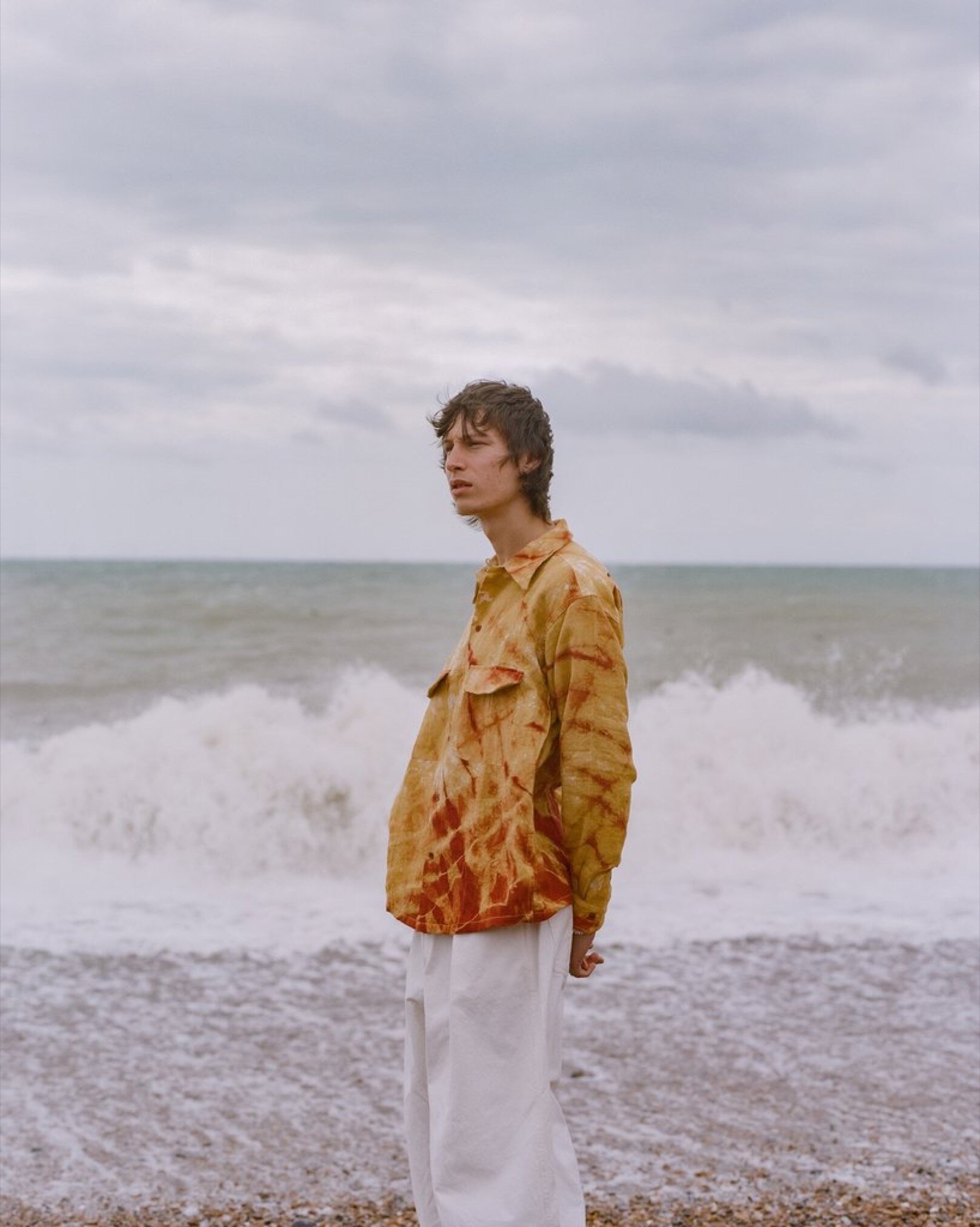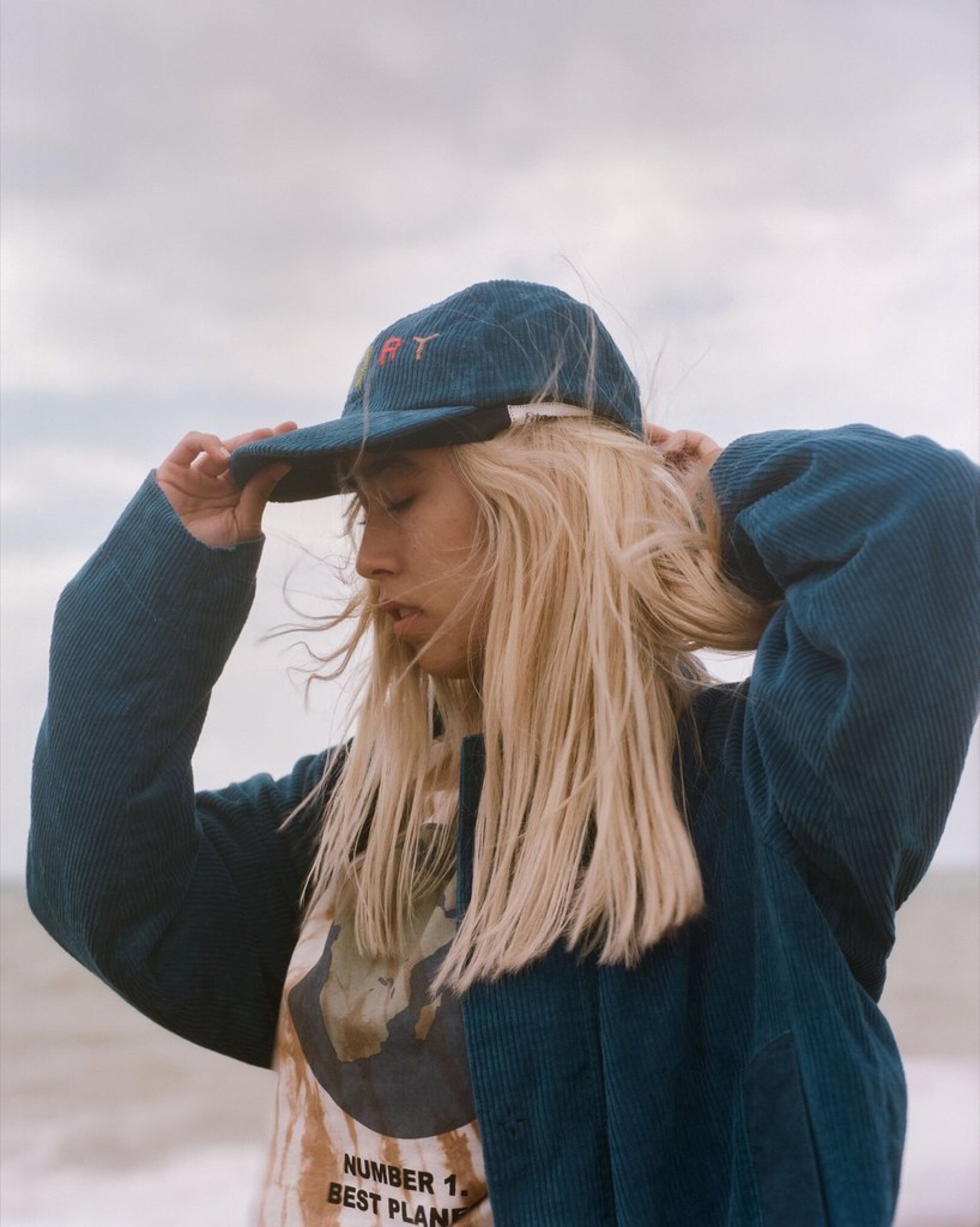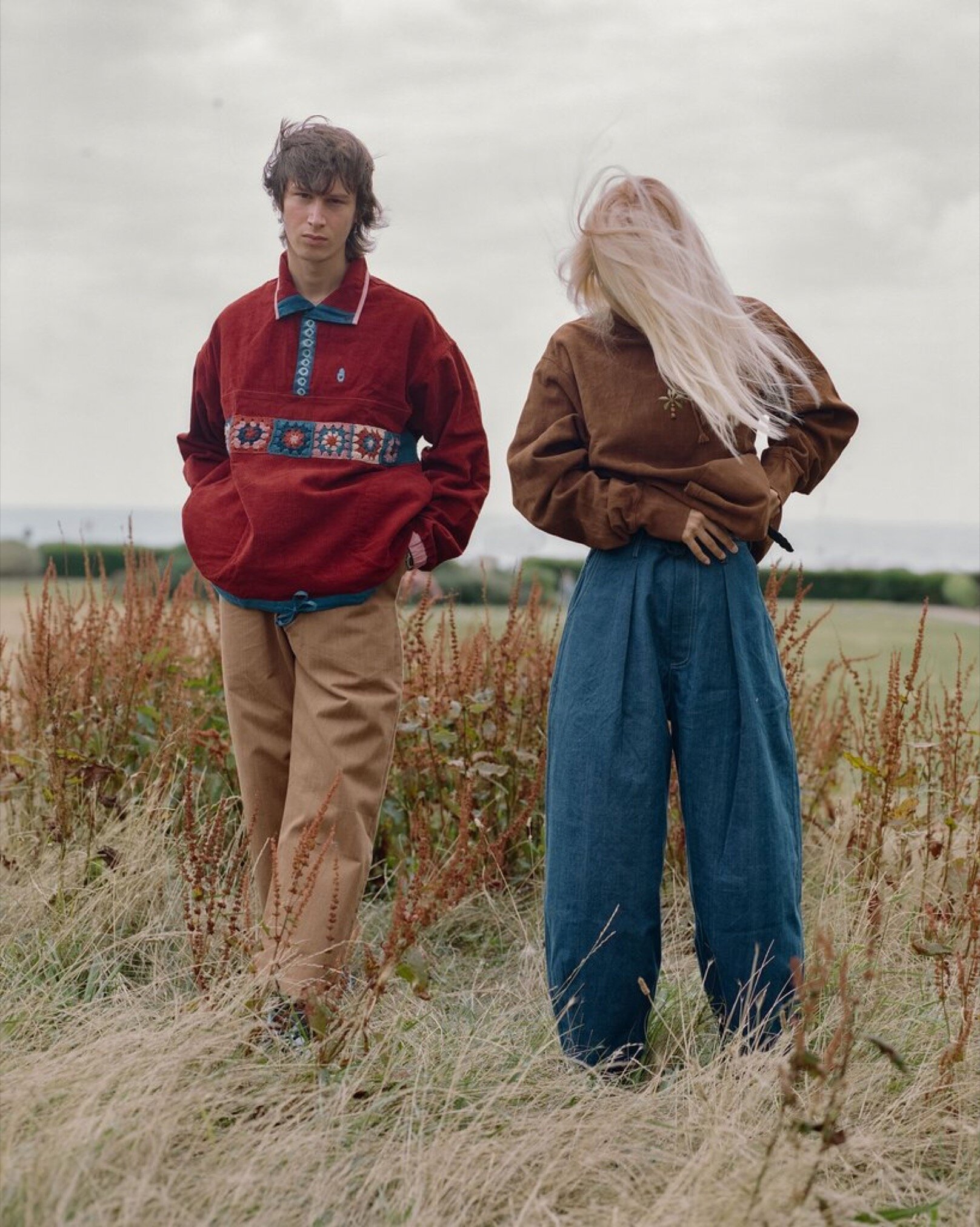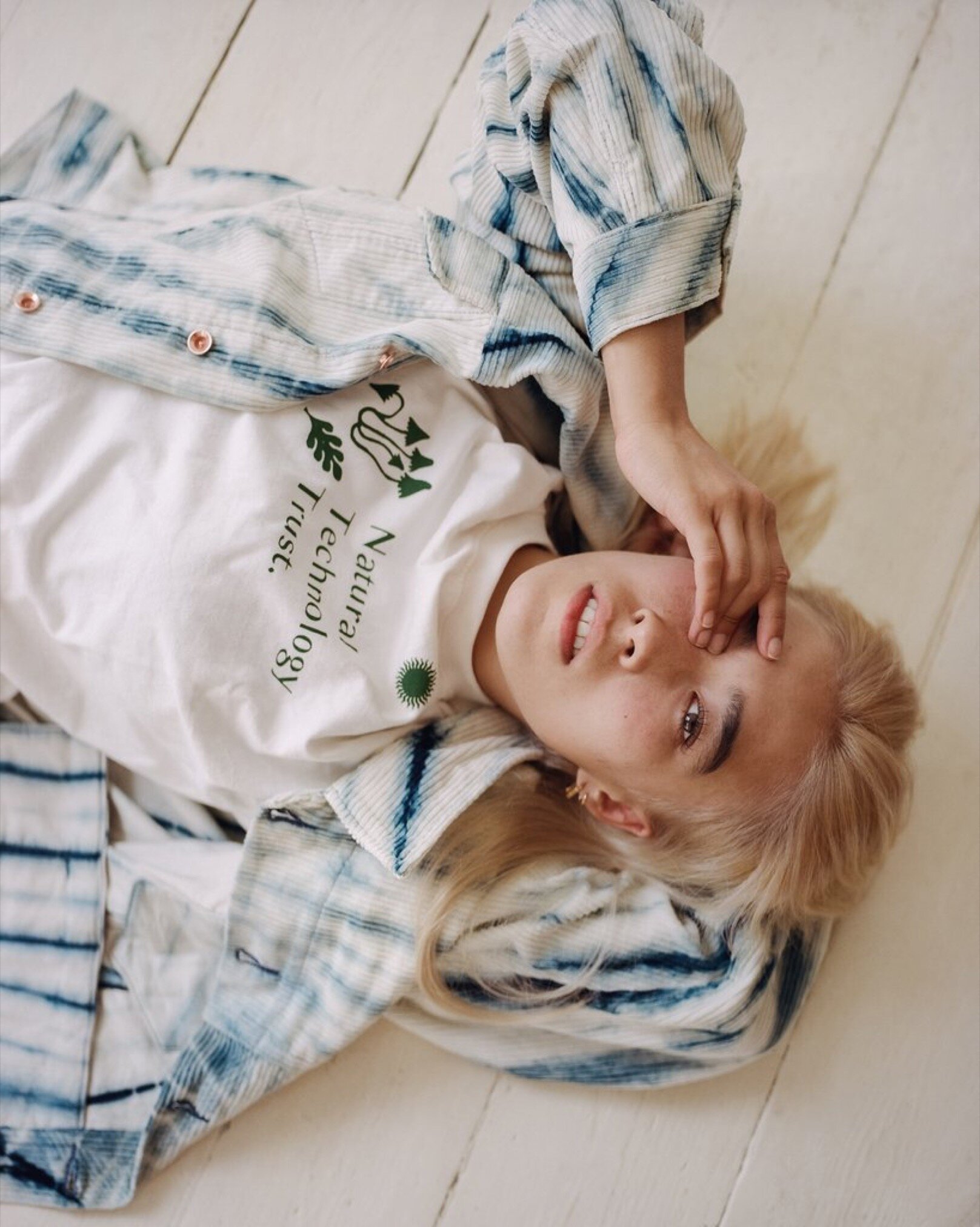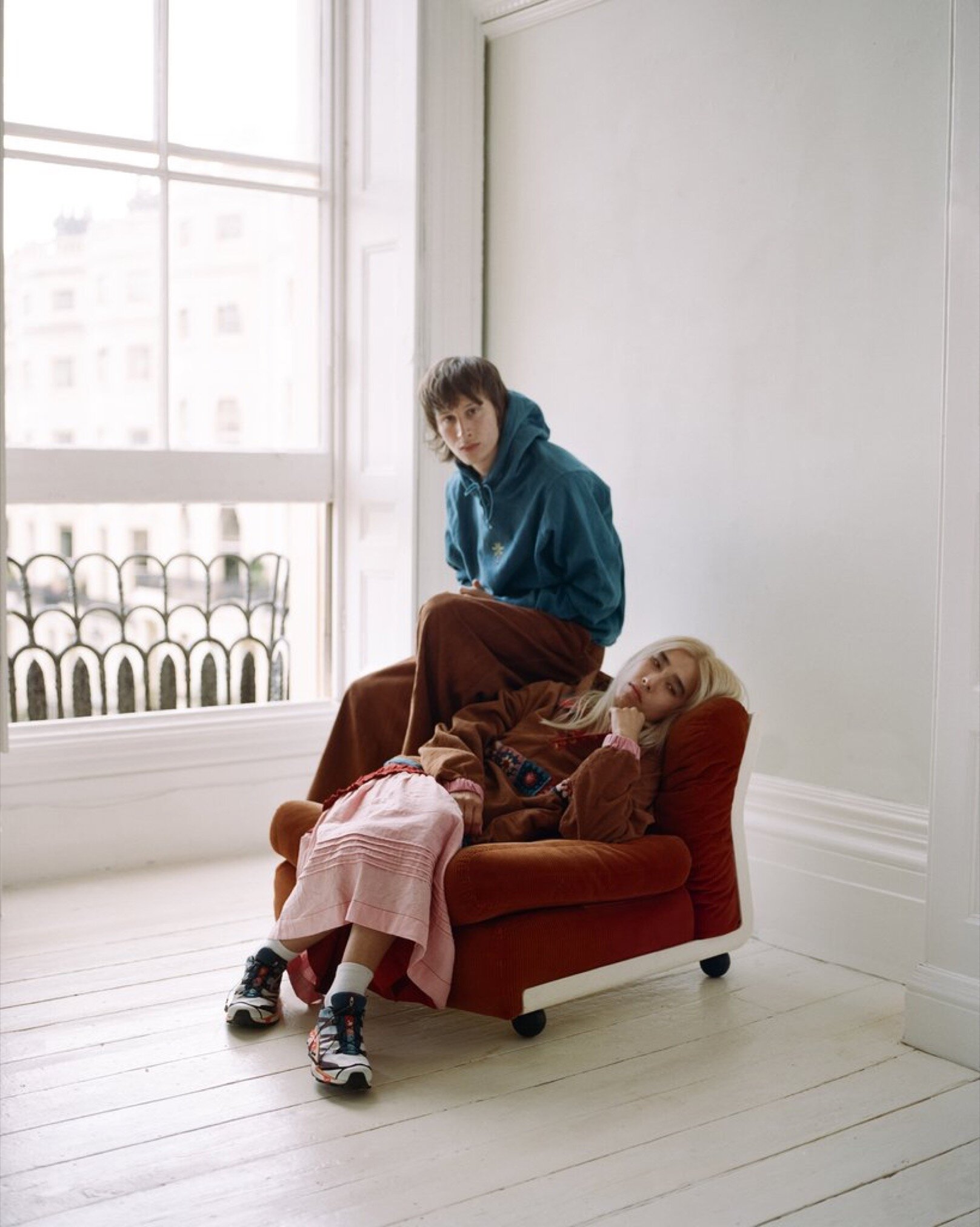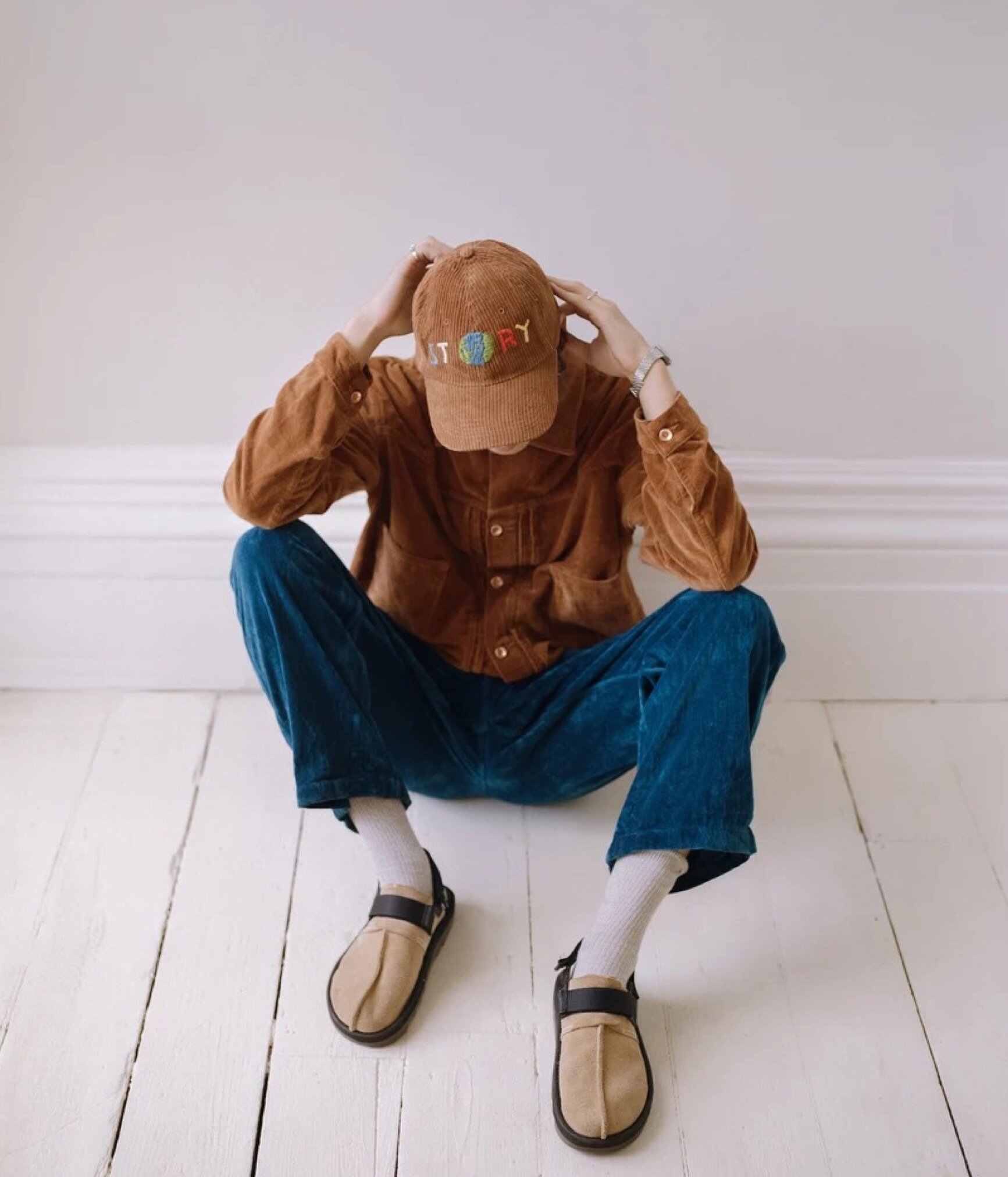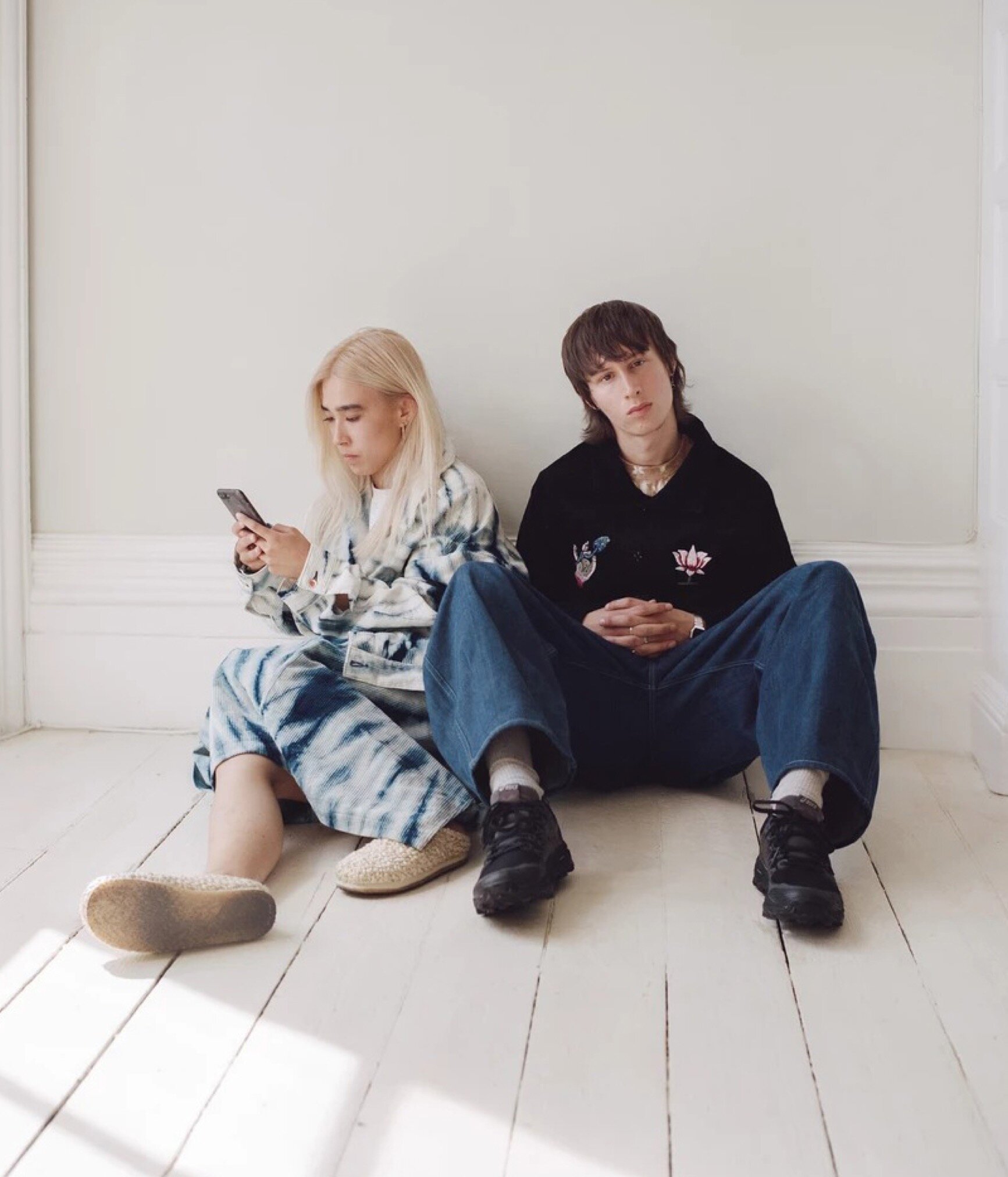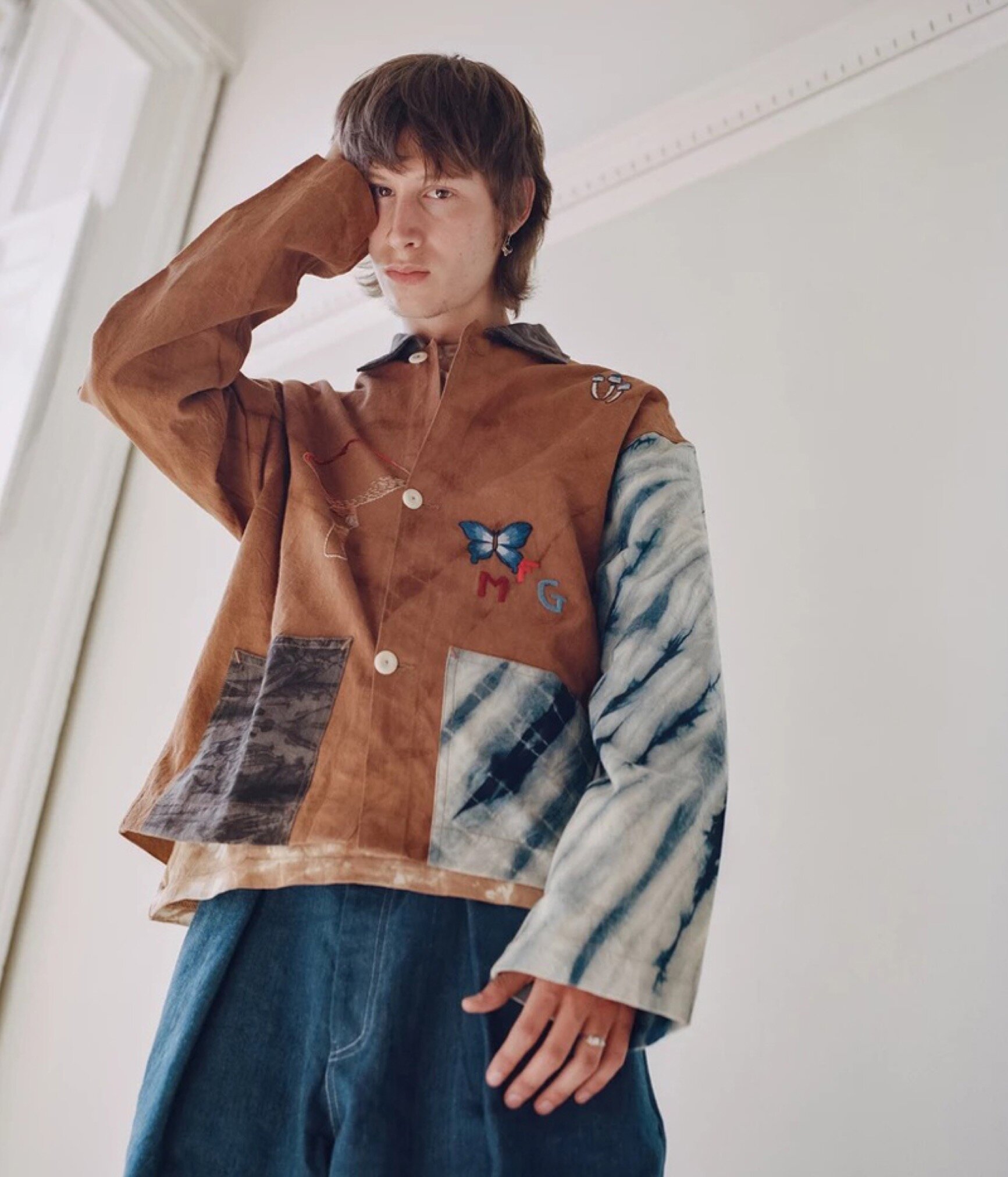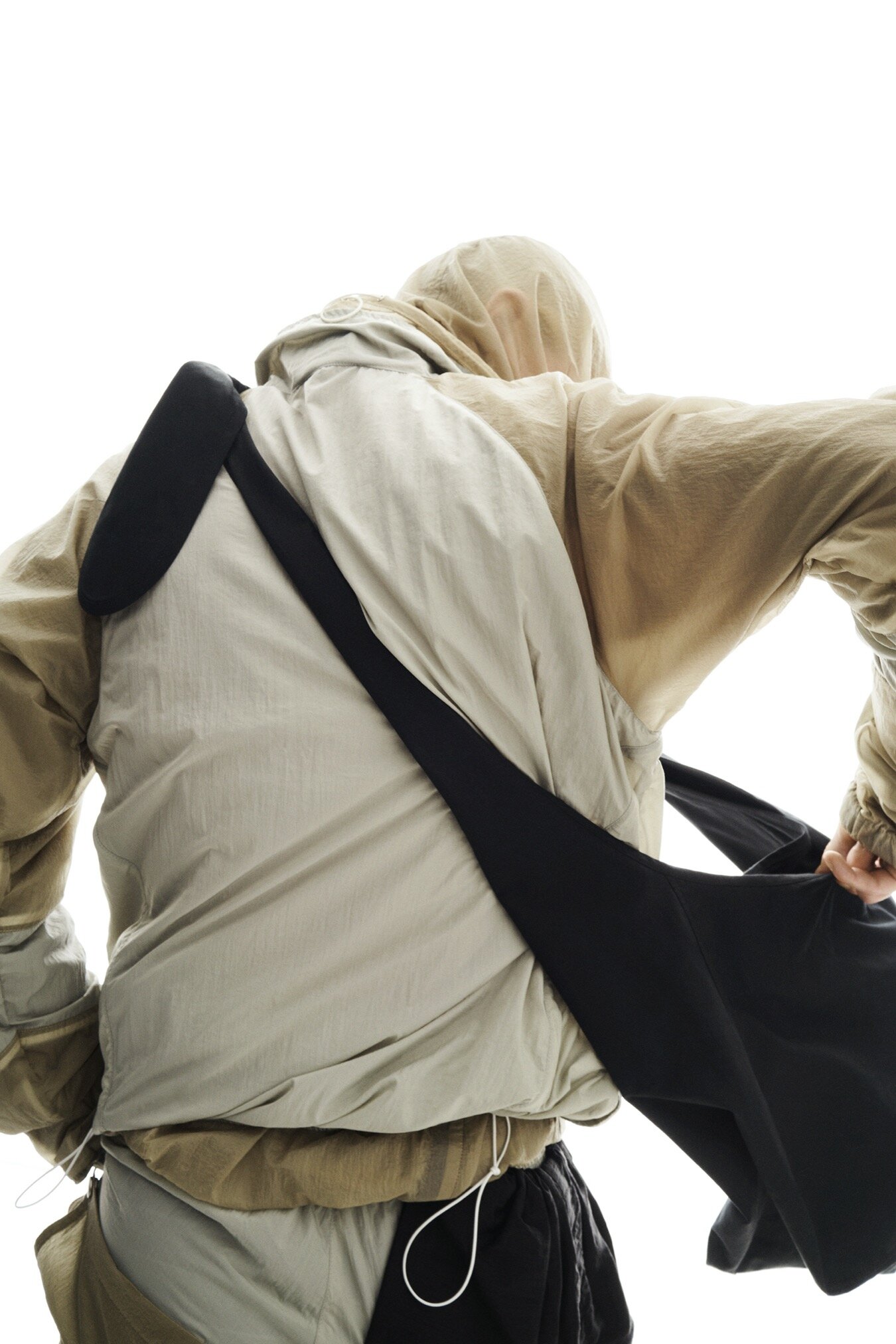The Slow And Steady Hustle: The Story Of Story mfg.

The planet is changing, and so are the demands of consumers.
Increasingly, people are asking themselves where things are coming from, what they’re made of, and how they were made. Because of this, everyone, from H&M - who recently acknowledged that in 2018 they had $4.3 billion worth of leftover stock - to Louis Vuitton, Burberry, and Chanel, who have literally been caught burning/destroying clothing, lay claim to sustainable measures. Unfortunately, this leaves it up to consumers to cut through the midst of what is done right and what is just greenwashing an ugly truth.
Picture by Max Miechowski
With these frustrations, new designers are trying their best to think differently. Pioneers are combining innovative ways of sourcing materials with mindful production to create garments that are easy on the planet and still look the part. When Stella McCartney started to create the first waves of sustainable fashion in the mid-1990s, she was ridiculed. Now, in a time of planetary crisis, fashion has to change. Creating a contemporary and aesthetically relevant brand whilst avoiding economic cost-cutting measures used to be one of the hardest steps for a brand to take.
Story mfg., the brainchild of Katy and Saeed Al-Rubey is doing just that:
Story mfg. has gone to considerable lengths to ensure their operation, from cotton to denim, and from bleaching to dyeing, is done in the least environmentally impactful way. And, to prove they have nothing to hide, and to show us their processes directly, they do this all with reflective and radical transparency.
Pictures by Max Miechowski
The brand started in 2013, but their story really got interesting in 2014, when they moved their production to India. When most companies move production to India, red flags go off: images of sweatshops appear in our heads; Rana plaza recollapses. But, this move wasn’t prompted by cost-cutting measures, but by creative endeavour. Story mfg. moved to India in pursuit of traditional clothes dyeing and weaving techniques that don’t rely on toxic waste products or harmful bleaches.
They started working together with an existing dyehouse in a small village in southern India composed of hundreds of years worth of knowledge, and through this created formal employment for artisans and traditional workers that thought their unique skills and crafts were being lost. Here, in their local environment, they can work after their principles and their own tempo. In the fashion world where everything is growing at a rapid rate, with styles demanding change and innovation constantly, Story mfg. is creating a counterculture: slow fashion. Due to this slow growth process, they can provide garments that look good but are made with the highest quality and utmost conscientiousness.
Their clothes sit at the intersection of ancient and modern. Built on ancient practices that are combined with modern trends and audiences, one guiding principle dictates their brand: that aesthetics and conscientiousness can co-exist.
Picture by Glenn Larkby
The SABUKARU team met Saeed from Story mfg. in Tokyo. Saeed is a guy who lives his own brand to the core and refuses to fit into the fashion scene as we know it. A guy who is not interested in superficial talks at fashion weeks, who is well dressed and relaxed. The sympathetic co-founder talked with us about production in India, a lesson in patience, and how hard it is for a brand like Story mfg. to collaborate with bigger brands, yet why it is important that they do.
Can you give us a short introduction about who you are, what your brand is about and what you are doing?
Sure. My name is Saeed and I have a brand called Story mfg. We’re from the UK but split between the UK and India mostly. We work from an atelier and dye house in India, where we make almost everything. The brand is founded on the principles of craft, being the most important thing, and being earth-friendly, animal kind - basically a good-person brand. It’s been mostly my wife and me until now.
Pictures by Jenna Foxton
When did this all start? When did you put your ideas and visions into actual garments?
What it is now is quite different from what it was when we started. We didn’t have a vision of a brand and clothing that looks the way it does now - which has collections and stuff. Katy and I had imagined something we haven’t seen. Something that had a handmade quality, that was naturally dyed, that was made with the principles we liked. So we travelled to India, we went to a few spots to visit natural dyers. And we worked with them to make denim. We then made a pair of Jean and took a sample to start talking to people on Reddit about this pair of jeans. And we did a pre-order thing. We wanted to do 100 jeans and found this company back in the UK that used to make workwear during the war and now it makes lots of big luxury name brands. So we worked with them to make the jeans, worked with these hand-weavers in India to naturally dye this denim and then worked together with this place in Turkey to make the buttons etc. We made them and moved on to jackets and then the shirts.
We were doing this thing that is a bit more normal now, where people work on one product at a time, tell the story, then make it available for people to support with their purchase. After we did the jeans we moved on to making a jacket, then a shirt, then other bits and pieces. A few years into this a dude with a store called LN-CC in the UK came to see us to check out what we’ve been working on. They were the first major fashion store to split their offerings into men’s, women’s, and then separately a ‘conscious’ section. They asked if we could make a small collection for them. And we were like: “yes we can”. And, off the back of that, other stores started asking. Then we made a collection. That was the first season, but it was tiny. Two or three jackets and two pairs of jeans from two fabrics, basically the same fabric, just dyed in a different way I think. Then we developed the collection ever since. We started in menswear twice a year and then last year we started in womenswear as well. So that is four times a year now. And every season we develop it more.
We make everything from scratch. For a lot of things we buy the cotton, make the threads and then hand-or machine-weave it and naturally dye everything. When we first started we could only do denim, the next season we were able to do denim and shirts, so the collection got a bit bigger. It goes like that. Every time you want to do something, you have to make the fabric from scratch. It took us three years to make corduroy. But other designers are just going to buy corduroy. That’s easy. It took us five years to make t-shirts because it’s very hard to make eco-conscious t-shirts the way we like it. It took us five years to do screen printing, it took us three years to get patterns. It was only this SS20 where we had woven patterns. So it kept working really, really, really, really slowly until the point we are now, where a lot of people say “wow you got a really big brand now!” But, it’s taken sooooo long. But, we like growing slowly.
Since everything takes so much time, energy, and research, and you have 50 stores asking to buy your stuff, is there a point where your production reaches a cap?
Yeah, we have to restrict. We haven’t had to do it too much in the past because stores are cautious about a young brand but this season we have really started to have to be strict and say no to big orders because of the amount of handwork. As an example, To make enough woven fabric for a garment it might take one person a whole day (or more). If a company wants to grow, like ours, usually what happens is that they get a faster weaving machine and grow vertically. It’s all about automating and faster machines. But the heart of our brand is in the craft and all the natural dyes. So if we want to make double the amount, we have to get two people. And if we want to double that, we need four people. So we can’t grow vertically but have to grow horizontally. Every season we grow, we get more and more people involved. It’s great.
Luxury brands like Chanel and Dior used to keep all the crafts alive. Most of the small couture hand makers used to do business with these big houses. And these houses kept developing these crafts. But these companies became more interested in “streetwear”, now they make 10,000 printed t-shirts. That concept of being a patron of the arts has shrunk loads. But for us, it is really important to have more people interested. On the other side, it is a commitment to people in order to give them work. In India and Thailand, where we work, when you give someone a job and the next season you don’t get enough orders, there is no social system that gives them welfare. That’s why we also grow slowly. We could just suddenly work with new block printers or new embroiderers, but if they are bad we can’t leave them. We have to keep working with them to keep going.
How do you stay on-point, while growing slowly, in a fashion world that is exactly the opposite?
Yeah, I don’t know. There is a change, a generational shift. Buyers now get it, that there are brands like ours that are more into the craft. I feel craft and sustainability are our generation’s big punk scene. It doesn’t look like punk, but the feeling is the same. Sustainability, good consciousness and return to craft is our counter-culture. The culture before us was just all about fast, fast, fast and cheap, cheap, cheap. Younger people are fucking sick of it. We are sick of companies, run by old people that have no stake in the future. They don’t give a shit, because they’re not going to be around. Across the world, things are changing. Everyone is pretending it’s fine but they don’t care anyway.
Picture by Jenna Foxton
Was there some point in your life, where you thought: “Hey, stop, this can’t go on like this - I’m doing my own thing!”
Well… no. Because everything was the slow genesis. We weren’t suddenly like: “Oh, we are so sick of it and we are doing our own thing that looks exactly like this”. We found ourselves in this place. It’s not where we planned to be. We planned a small thing and people have led us to hit bigger – and it went bigger. When we started, Katy, my partner, was working for a company called WGSN. They tell other companies what’s going to be popular in a few years. So she goes to trade shows and sees what the fabric producers are producing at the moment. One factory had a natural dyed handwoven concept that we ended up using for the first season but it was way too expensive for anyone to use. That was when we said, “Okay, no-one’s going to do it, so let’s do it”. There is a concept in journalism, where one person writes about a thing and then it goes around called ‘churnalism’. When I first started doing editorial, someone told me that they don’t write anything unless there is something to be said. That concept is also very important to Story mfg. Nobody is taking the opportunity of our process, so that is where we saw our opportunity.
Now an aesthetic question. 10 years ago a sustainable, organic brand would not look as young and trendy as Story mfg does. Where do you derive your inspiration?
Picture by Max Miechowski
The fabric is first, but the design is really important. In the early years of the brand we talked about natural dyes but we didn’t talk about it being all organic, vegan, biodynamic and all this stuff. Because you see and hear those terms as a customer and immediately start framing things incorrectly to have a real Health Food Shop look. We produce a designer product. We got the aesthetic which is interested in utility and outdoor wear and we made that in a crafted way. A lot of the things hanging in the showroom right now are simply outdoor icons remade. For example a 90s ripstop jacket, and we remade it in handwoven ripstop. An alternative dimension version of the jacket.
Talking about outerwear, how can you provide features like waterproofness?
We can’t, it is just the aesthetic. In the last year many companies are coming out with things like bioplastic that show promise on that front though. The basic state of things is there are natural fabrics and plastic fabrics and the natural fabrics don’t perform well (in terms of ‘outdoor sports’ performance) but they’d biodegrade. Plastic fabrics perform well but will be around till the day we die. But now they’re developing these things called bioplastic which is kind of a cross over. The best you can do with all natural against the rain is using very dense cotton and then wax it. Obviously, with oil-based fabrics, you can do other treatments. With sustainability, there are two main different approaches. A technology-based approach, led by Patagonia and co., making 10,000 jackets a time and putting money into different fabrics. And then there is a craft-based approach – us – where we are doing much more expensive small stuff. For example, natural indigo is an original performance thing. Here in Japan, they used it a lot. It is antibacterial, so it doesn’t smell bad if you wear it for a long time. Secondly, it’s like a coating which is fire retardant which is why Japanese firefighters used to wear indigo-dyed clothes. So you see, there are many possibilities and there is development.
Picture by Max Miechowski
Where did you find out about all these ancient technologies?
Reading lots of books and travelling a lot. Talking to people. Natural dyeing is ancient knowledge. There is a lot of lost knowledge, so you have to rediscover it. The place in India where we produce is the biggest natural dye fermentation project on the planet. And it’s constantly working and changing on the process. Our brand is much more like making wine than making clothes. It’s a lot of trial and error. Everything looks different depending on the weather or the soil. Even if someone is wearing nail polish while dyeing. All these things. It’s like terroir.
Your latest season features mostly earthy, muddy colours. Do colours depend on seasonal growing plants?
All plants are seasonal but the dyes are extracted once they’re picked. They get picked and dried so we can use them at any time. But we do have to work with the season. Right now, for example, it's the rainy season in India and everything is dried outdoors, so the process is slowed down. During the summer the production is super fast. Dyeing is a long process of around ten days.
Pictures by Max Miechowski
You are very transparent about your production compared to other fashion brands…
…why would they want you to know? The reason the brand is called Story mfg is because of that. In the beginning, no one knew us, but we had the idea that if you tell the story of a product it gets its heritage and the brand itself would not need a heritage. Now we have our little five-year-old heritage. Story mfg means Story manufacturing. It’s the story of the garment. It is very important to us which is why we put in the DNA of the brand. We are as transparent as we need to be. There are brands, where they put the addresses of their factories in big lists but nobody is going to visit it anyway. I don’t know if it’s for greenwashing but it’s only an address. We don’t put addresses out but we constantly share insights of the atelier and the production process.
How does the social impact of your production motivate the brand?
Before I went to India for the first time a mate told me that there is a denim factory and all the banana plants growing around are growing blue bananas because of the whole waste. I was like: “That is fucked!” That shit is bad for you to wear. We’ve got this idea when we buy a skin cream we look up what’s in it. With clothes, we are more like: “Hey the colour is cool, that looks good”, but clothing touches your skin more than cream. You’re in them all day. We should be wearing stuff that is good for us. And these natural dyes exist still nowadays because of Ayurveda which is healthcare, a cultural thing in India where you get prescribed certain herbs and elements that help you. In Ayurveda, if you have a skin condition they can prescribe you clothing dyed with certain plants.
Our workers are getting well paid and we look out for gender equality. I used to call it a factory but it is not a factory which is why we now call it an atelier. It is powered by renewable energy, everything is local.
How does it feel seeing this all grow in front of you?
It’s sick! The first time we went there it was 16 people, the second time 20, and now 60-70 people are working there. And it’s still growing!
Do you think those big companies that are already in the gutter can change their direction?
I don’t know. I feel it will only change in a technology approached way. In ten to twenty years big companies will get all their clothes produced by robots and no humans have to be involved anymore. They’re not going to make happy factories. It’s hard to manage. It is really expensive. People see the prices of our garments and that they are produced in India and think: “These guys are taking the piss!” We’re not. We’re just doing it for the creative endeavour. I think there is room for companies to grow but maybe not in our way.
How hard is it for you to collaborate with other brands that share your strict ethics?
It’s fucking hard. For a long time, we always said no to any collaboration inquiry. But last year we thought: “if we don’t open up to some badness, then we’re not being helpful”. So, when we’re looking for someone to collaborate with, we look for who is willing to make some change. It’s all about pushing the needle. The clash of the big companies structure and our way of producing is hard to lead to each other. We made some choices. For example, for shoes, using a sole which is recycled nylon. It’s becoming pragmatic choices. It is simply not possible to make it 100 percent our way if we want to cooperate.
Do you think brands that want to collaborate are open for change?
Sure! My point of view which is different from most of the other people’s is that consumers don’t have much power and brands are not doing anything. Our biggest impact is not on consumers or other brands. It is for university students, for learners, a new generation of workers. When they get a job later they might use this inspiration to produce something new, better, more sustainable.
The Story mfg. approach sounds more like a mindset that now is applied to fashion. Could you imagine introducing something that is not wearable?
Yeah, probably. On our website, we have our manifesto. The rules we wrote down right at the beginning. They haven’t changed much since then. We are working on homeware and jewellery. It’s interesting. The approach we have I feel happens a lot in the alcohol and beer industry because people get so interested in it. But, it doesn’t happen in fashion so much. Apart from a very small scale. Because of the internet, people from different niches can be connected all over the globe. Thanks to the internet we have a global niche, but it’s still fucking tiny.
How do you overcome the obstacle of missing infrastructure for sustainable fabrics?
If we can’t achieve something, we don’t do it. We have a library full of things we want to do in the future. That is why we grow so slowly. If it doesn’t exist we have to find a way of making it. It is really, really hard. Believe it or not, the hardest thing we’ve ever done was t-shirts. In the beginning, we only had a few orders. That was fine. Because of the hand-woven fabric, it’s really hard providing it on a bigger scale. When making t-shirts there is no small scale way. You have to do it in a factory. So we had to get to the point where we knew we could sell a certain amount of shirts. So it’s a lot of waiting. A lesson in patience.
Is it easier to produce in a country like India, where there is more infrastructure because of the existing fashion production?
You can’t ignore the power of racism. You read ‘Made in Bangladesh’ and think of Primark and people dying in factories – where cheap shit is made. But there is real craft in these places. Generations and heritage of craft. In the UK ‘Made in India’ could not be compared to products made in Japan or Germany. But here in Thailand, ‘Made in India’ is a powerful label. I hadn’t thought about that before.
Why do you think Japanese people dig Story mfg. clothes so much?
The fits, the oversized cut workwear, dropped shoulders. In Japan, they’re much more daring with their style. They love our oversized stuff. We produce XS-XL. And here in Japan, we sell mostly Medium to Extra large. And in the UK we mostly sell Small to Medium. I thought it would’ve been the other way around.
Pictures by Lantiki Store
Do you think the Japanese get the story behind the brand? Sustainability in Japan is still not a very big thing.
Maybe not the part about sustainability, but for sure the one about the craft. Here there is so much pride in Japanese heritage. And it translates to other things. An example: Natural Indigo, when you make it fermented, the way we do it, it ends up having quite a strong smell. Maybe gross, maybe nice, depending on your taste. A bit like blue cheese. When we first showed the products in create-shows and told them this is natural indigo, the first thing people, who knew about the stuff, did was smell it. When they could smell quite a strong smell, they knew it was authentic. I was positively surprised. At first, I was a bit embarrassed because I felt it smelled bad.
Picture by Jenna Foxton
What are the stand out pieces of the new season or what are the ones you’re most proud of?
Our best selling product for the stores was the Forager Jacket. A fisherman kind of jacket. I am most proud of the fabrics in that collection because it was the first time we worked together with new weavers who made this gingham. We’ve been working with the same people for a long time. This time we started with a new group of weavers from a different part of India. And because of it being a different part, again like wine, the ingredients are different and so is the soul. So we got a lot of different colours and weaves in our palette. And I am very proud that people like it.
Can you tell us what part Daniel Pacitti, one of the most influential stylist talents in Europe is taking in your brand?
We started talking to Dan a few years ago and he came modelled for us at a very young age for our Autumn/Winter collection back in 2017. Ever since then he has been showing interest in what we’re up to as a brand and being supportive. He’s on the same trip as us when it comes to what’s important and relevant in today’s climate. He’s interested in craft and sustainability, outdoor health, wellness and this stuff. He is into it. He styled the preview of Gentle machines, the latest collection. He is a good friend of the brand. Katy and I are the worst connected people but he knows a lot of people. We prefer going home and going to bed early.
How do you survive in a world of fashion weeks as a brand with these values?
Paris is ridiculous. The mens’ one is ridiculous and the womens' is extremely intimidating. The mens’ one is just guys turning up, wearing whatever the coolest thing is right now. This fucked up mashed up hypebeast thing. When I was in Paris for menswear, I saw what it’s like for a woman during a normal day. You get looked at up and down. You look behind you, guys are looking. When we are in Paris we don’t go out, not because we don’t want to, but it’s simply not our scene. But at the same time, I appreciate it because that is where we make our money. We go our way as we grow slowly. We do what we want and don’t feel pressured to go to parties. When we first started we were showing in a trade show, but it sucked. So we made our showroom for one season and then joined an agency of a new creative bubble. They care about it and we don’t have to be in the showroom if we don’t want to. Incredibly privileged to not have to hustle.
Pictures by Jenna Foxton
How much are you still involved in the production process?
100%. We do small experiments, but we are not as skilled as the weavers and dyers. All of the embroidery samples we do ourselves. Katy is a trained designer. We talk to the workers in India as we are there. They are messaging us constantly. We talk about dyes, fabrics and production. It is like we are always in the atelier.
Were you ever at a point where you were about to give up because of all the difficulties?
The good thing about the fashion industry is that there are certain milestones. Anybody that I know that skipped a fashion show for a season is gone. You can’t stop. This sounds quite grandiose, but this is our art, our baby before we had the baby. Every week we find something new that changes everything. It is exciting. Story mfg has come along at a very good time. There is not that much more interesting new stuff right now. Whether we’re good or not, we stick out.
Picture by Glenn Larkby
What is the next chapter of the story mfg?
We keep on doing collections. Hopefully, do homeware and collaborations. There are some on the table which we see how to handle them. I don’t like collaborations. We keep being slow. This is the kind of a question that begs an answer like we double the next thing, open up stores and so on. But our stretch goal is to grow 20% every season. What next is maybe shrinking and restricting? When we started we had nine stores. After three years there are over 50 now. Maybe we just ultimate it on these 50 stores. We are still trying to work out what we are and I am not sure yet.
About the authors:
Jacob is a chef and writer based in Manchester, England. He specialises in environmental consultancy relating to food and fashion.
Jon is a content manager and writer based in Stuttgart, Germany. He specialises on rain jackets, functional clothing, Arc’teryx and photography.
Interview by Peter Obradovic and Adrian Bianco


